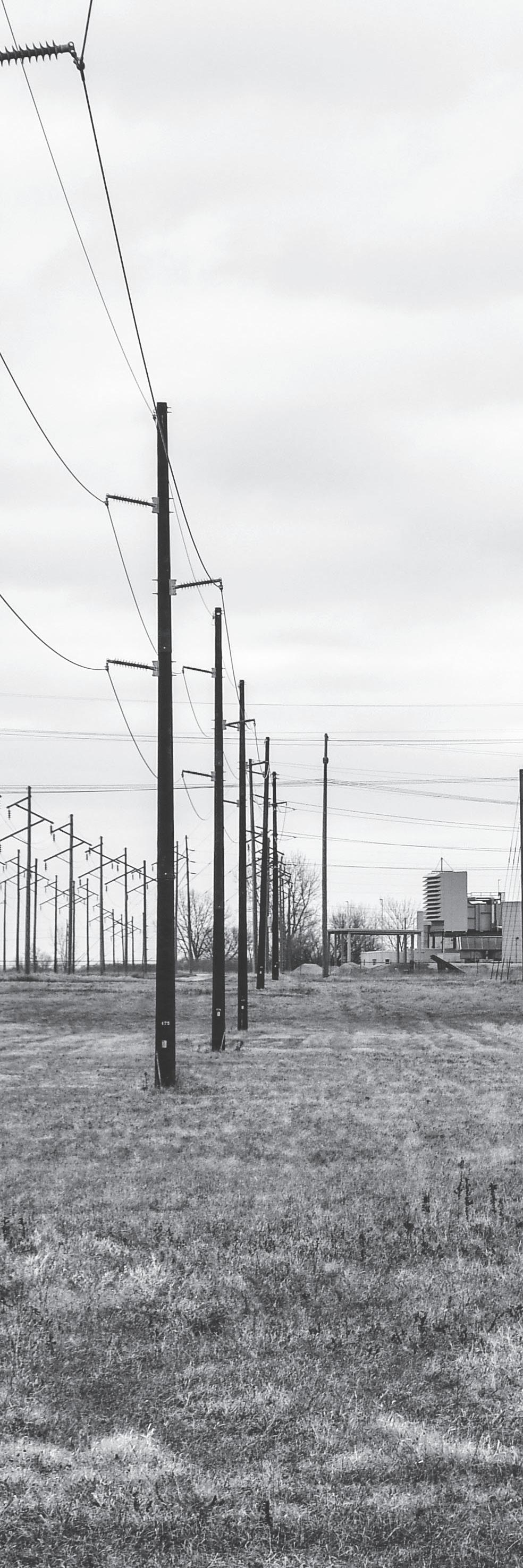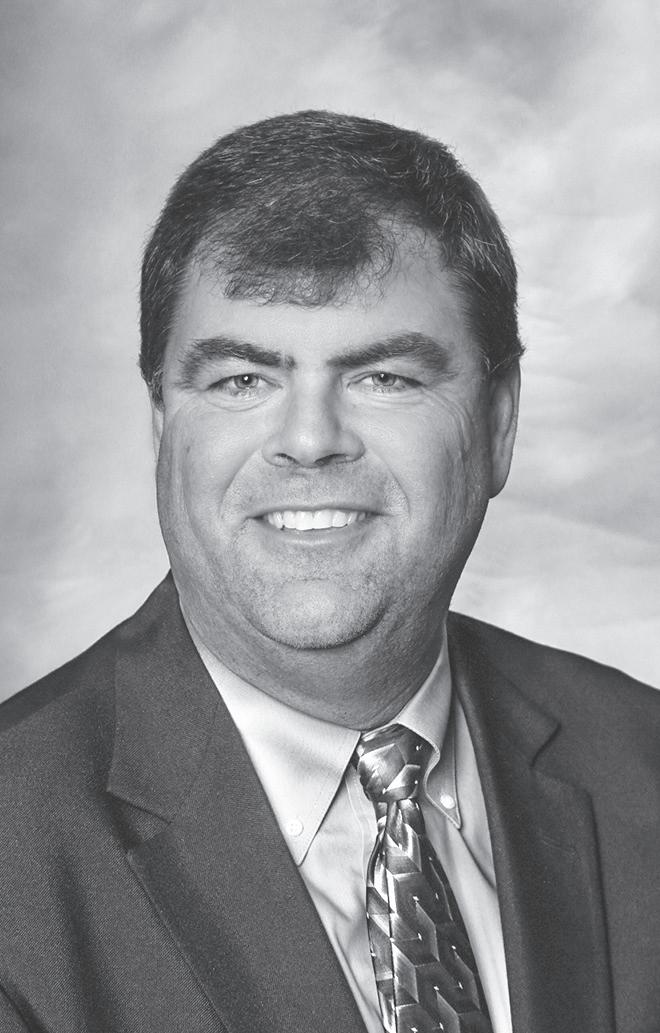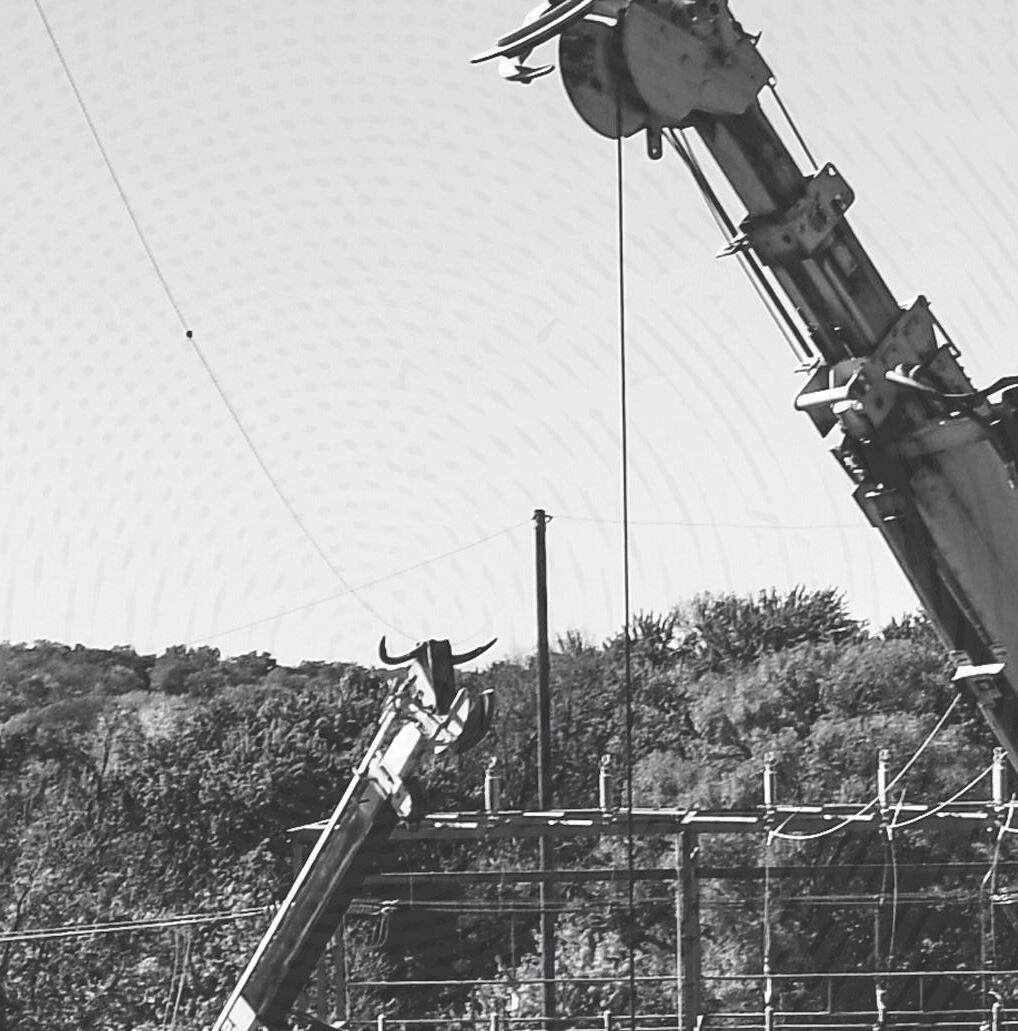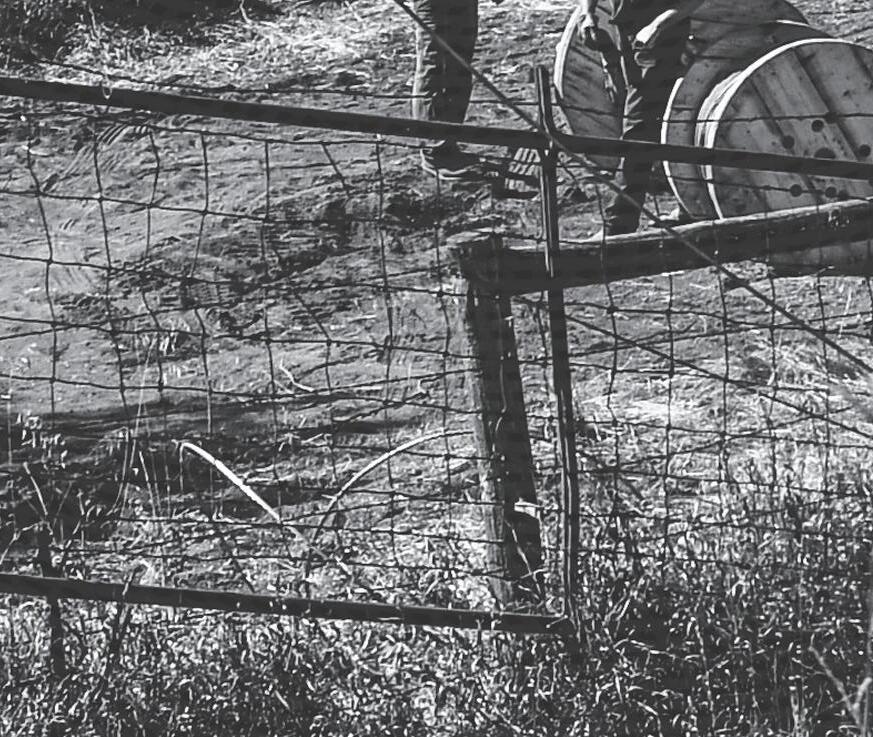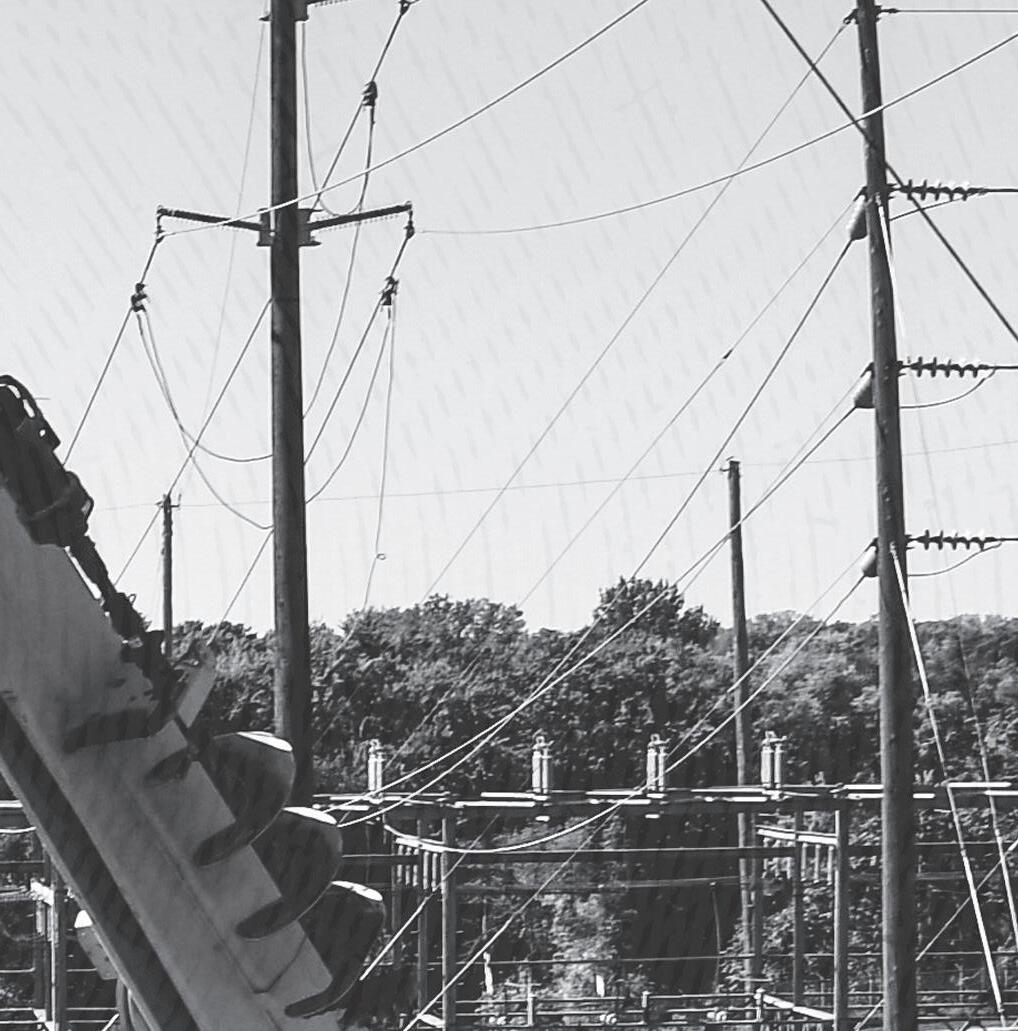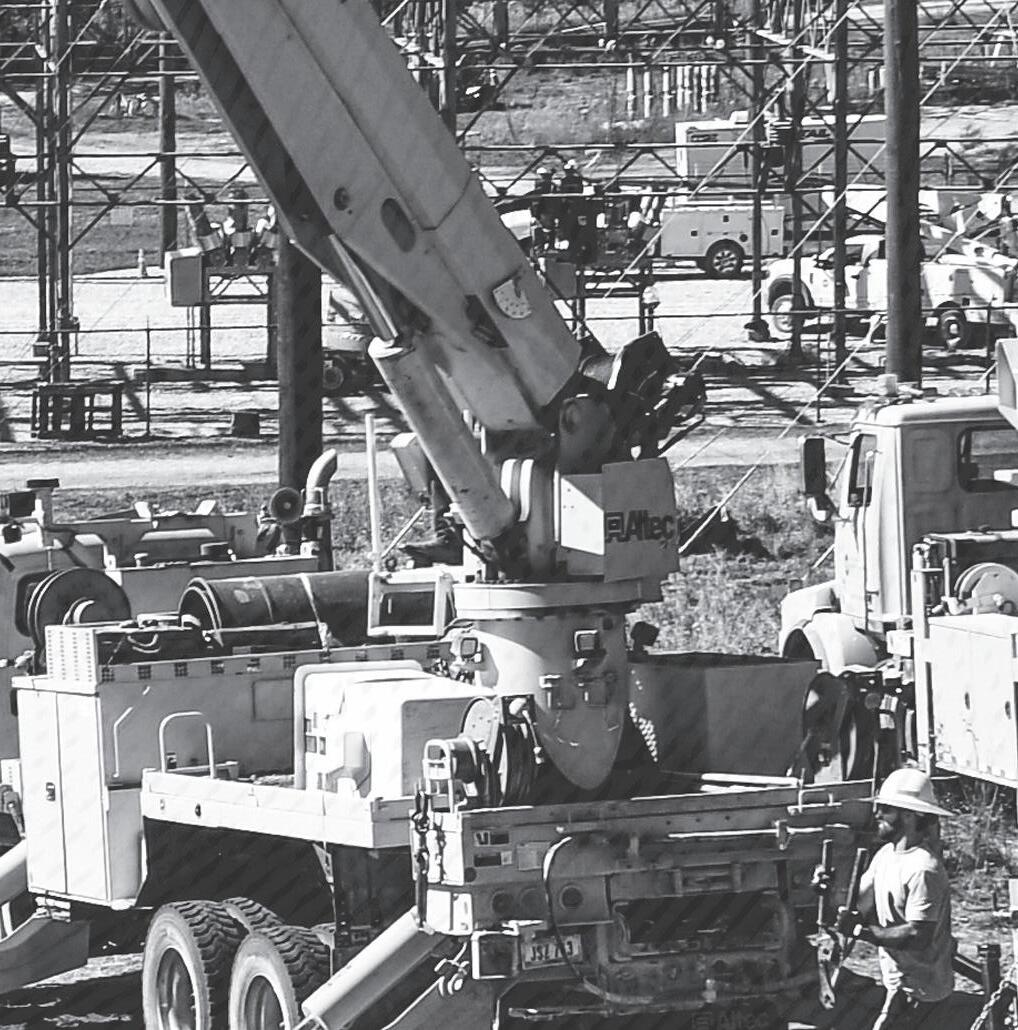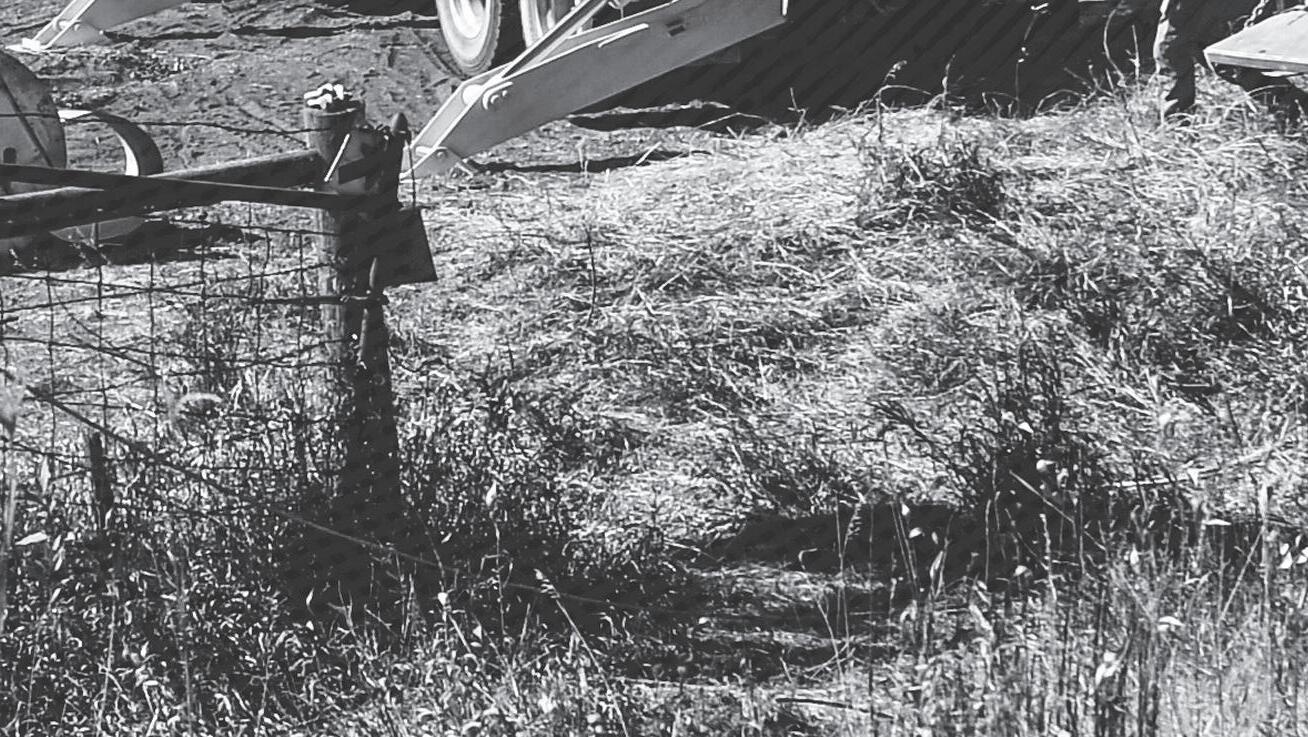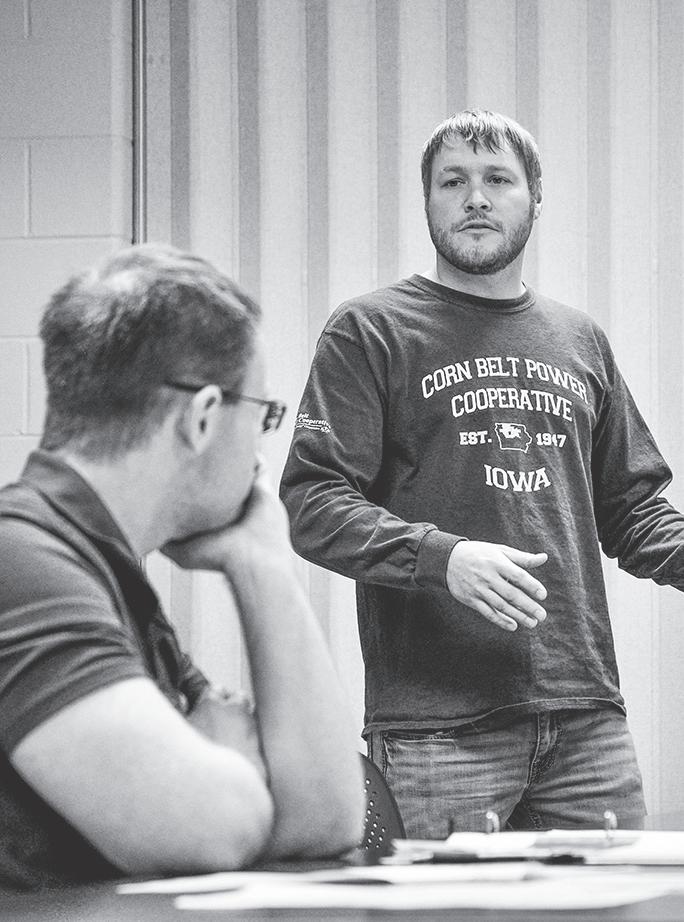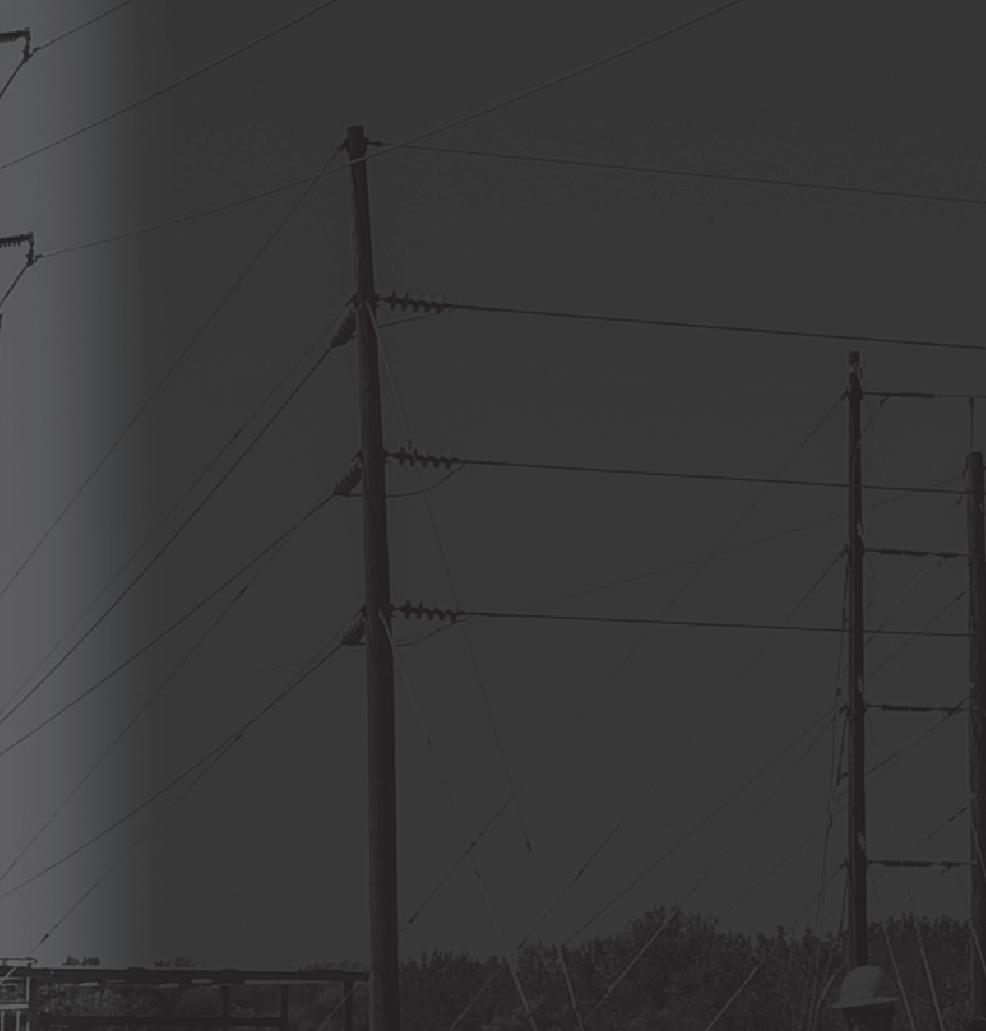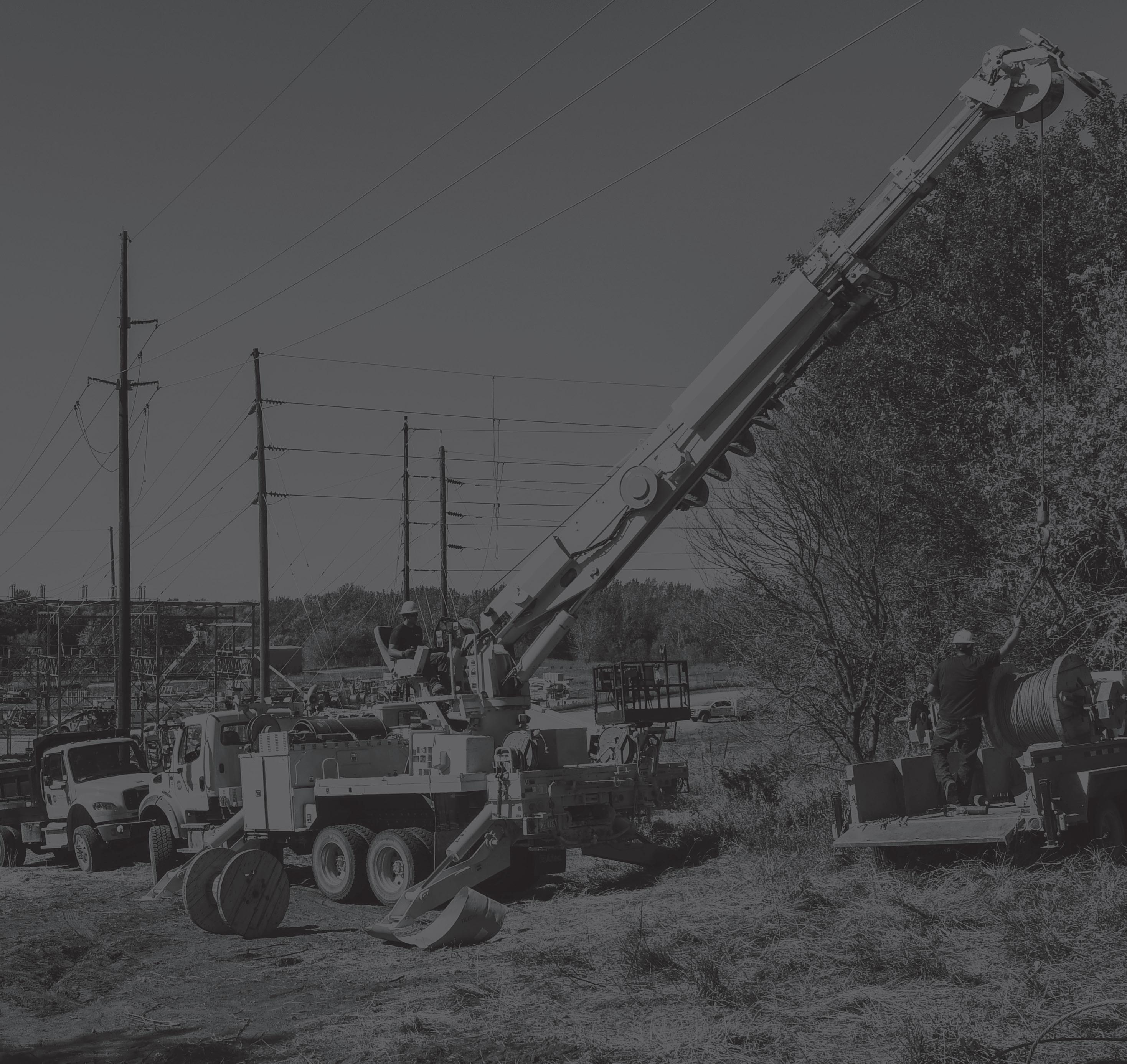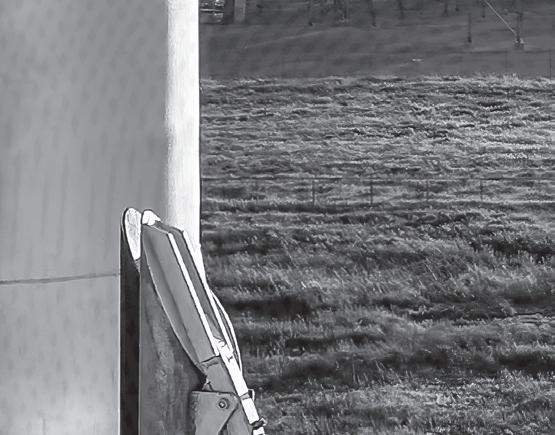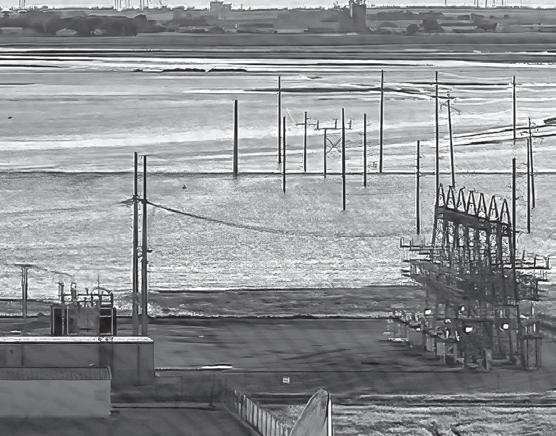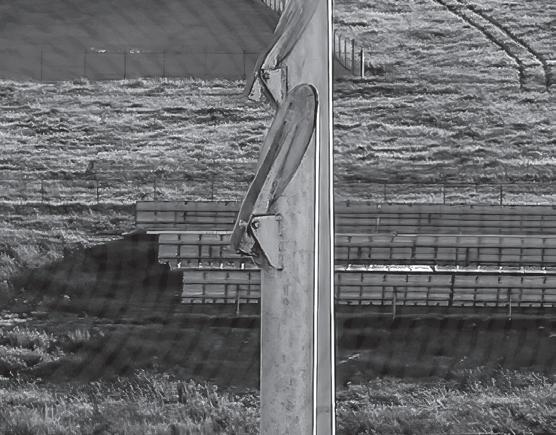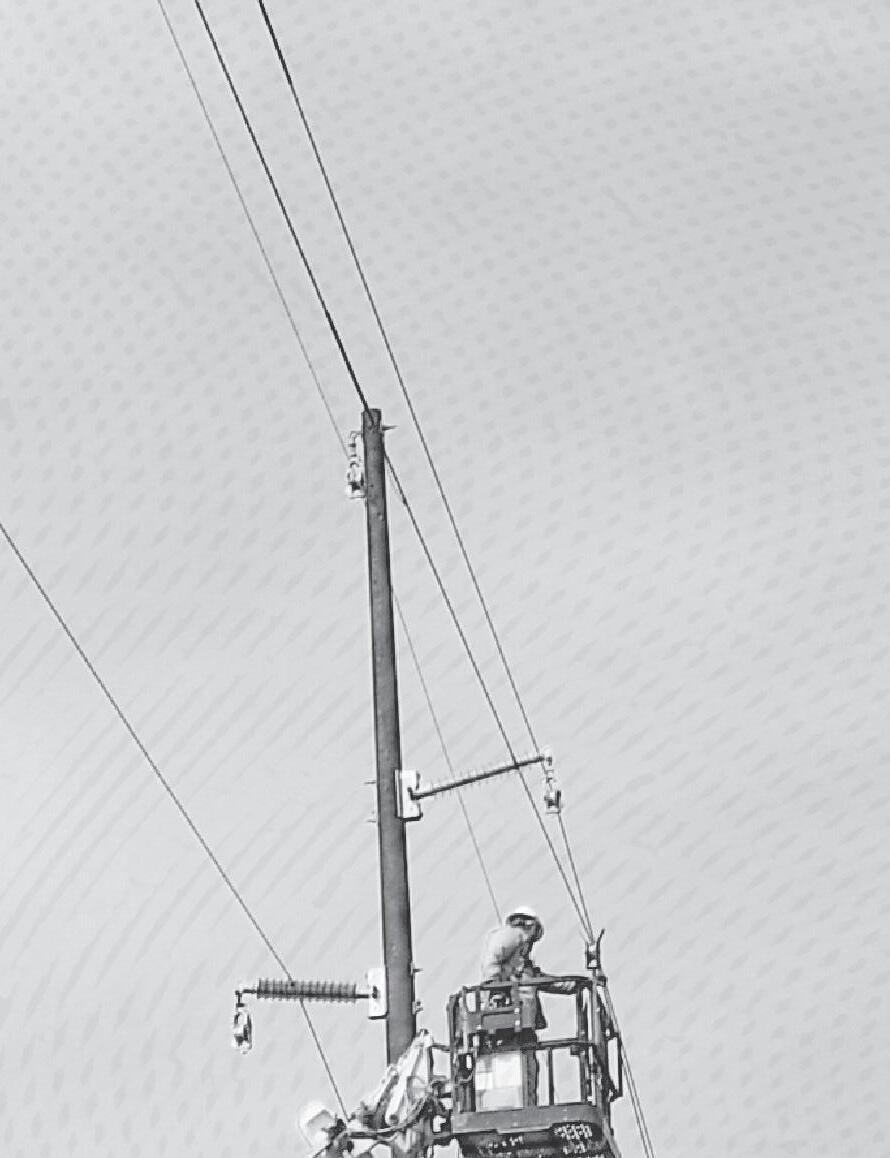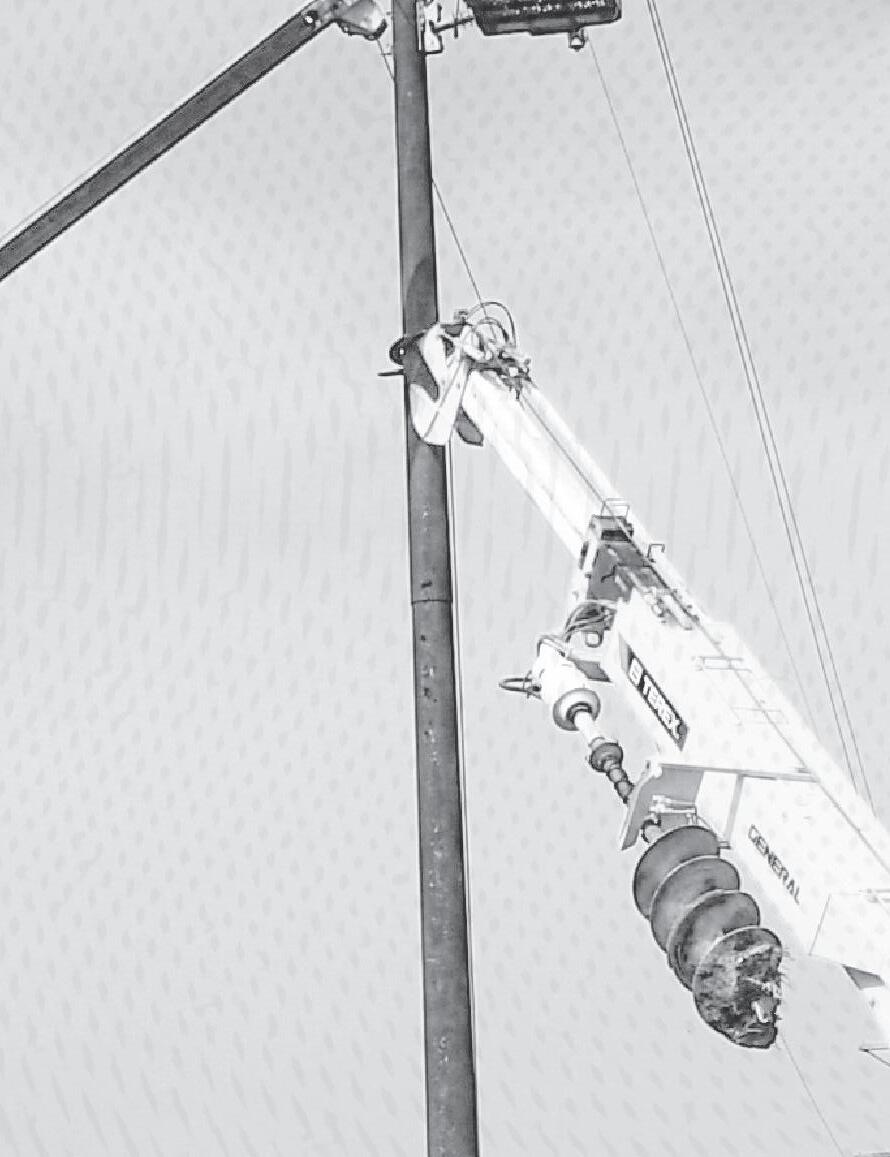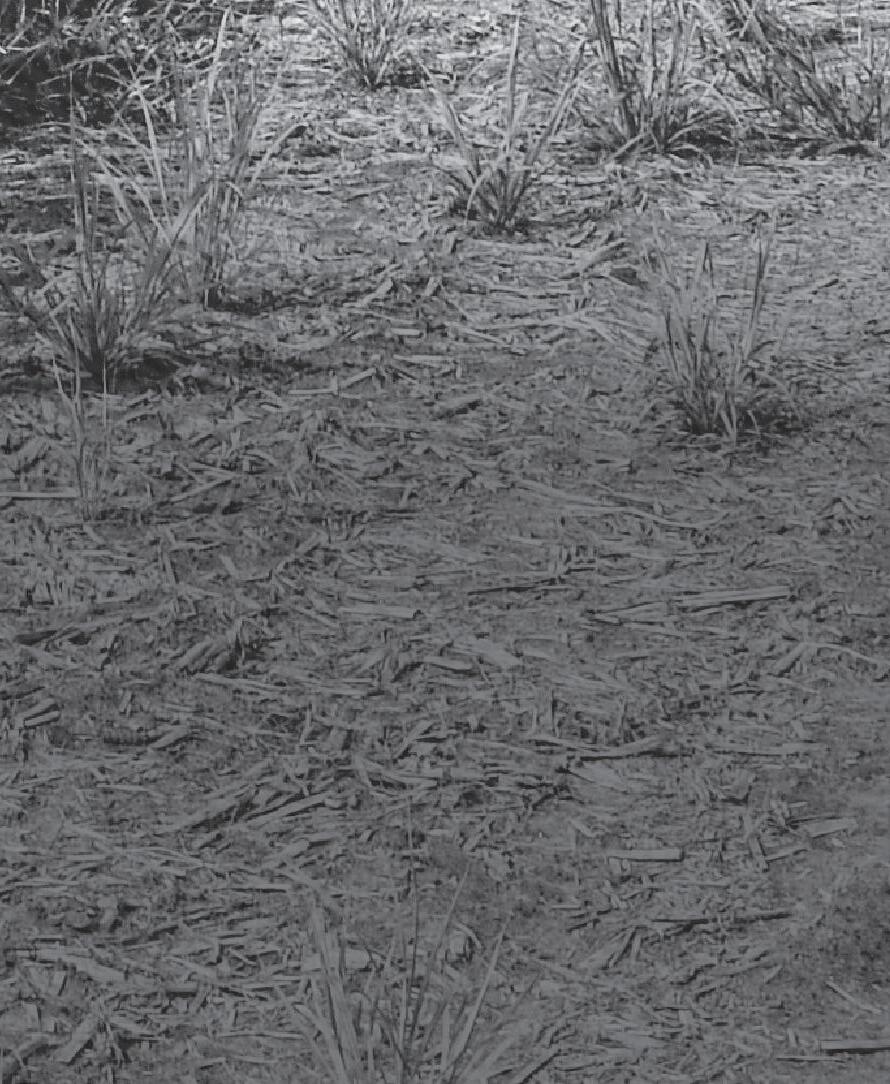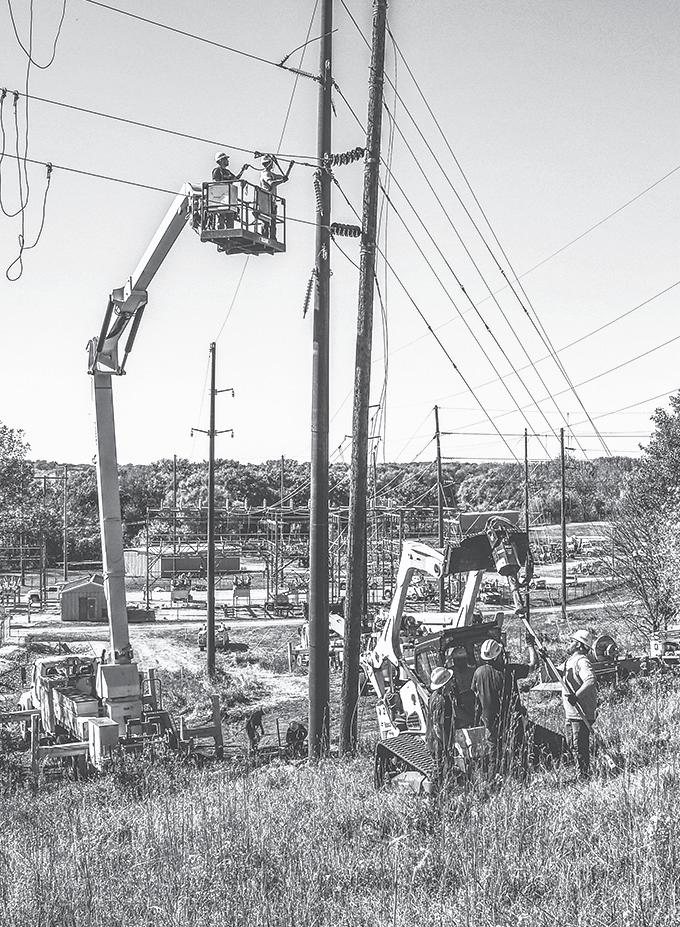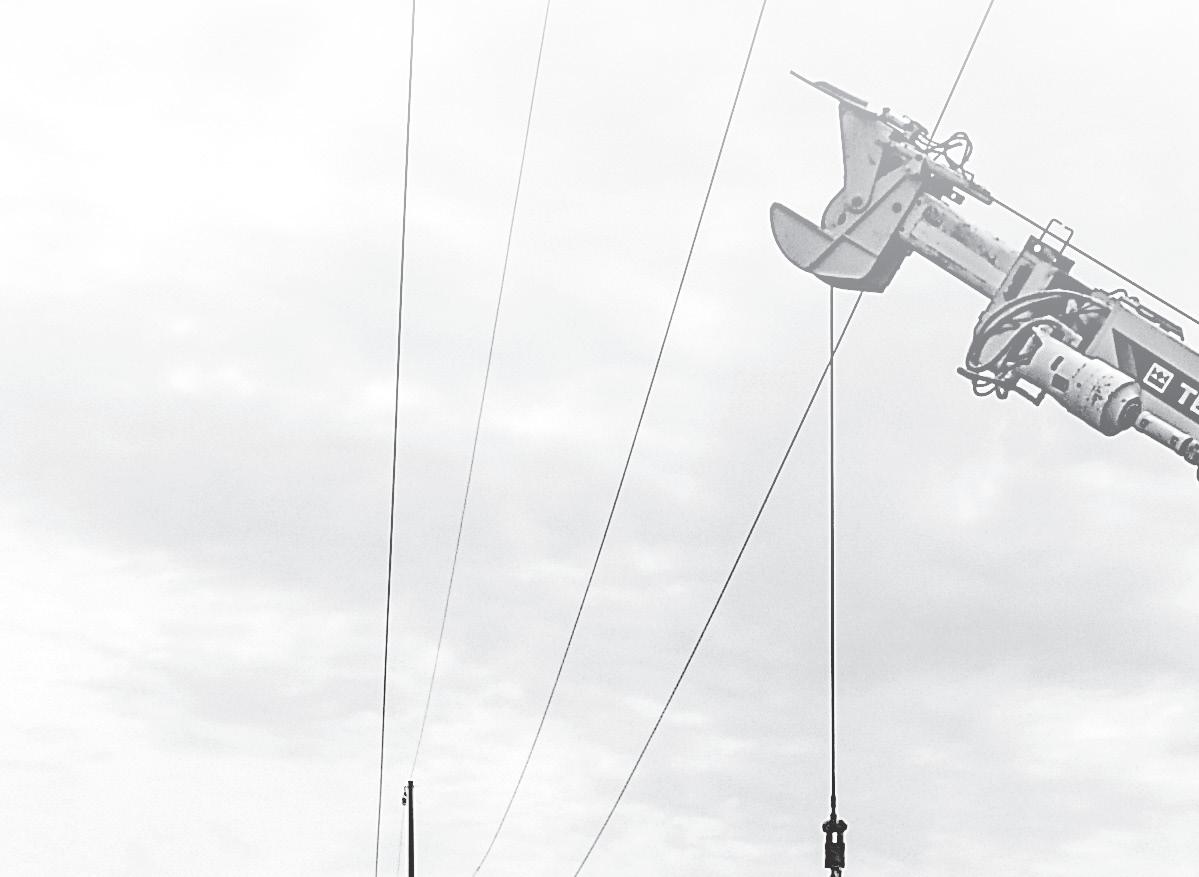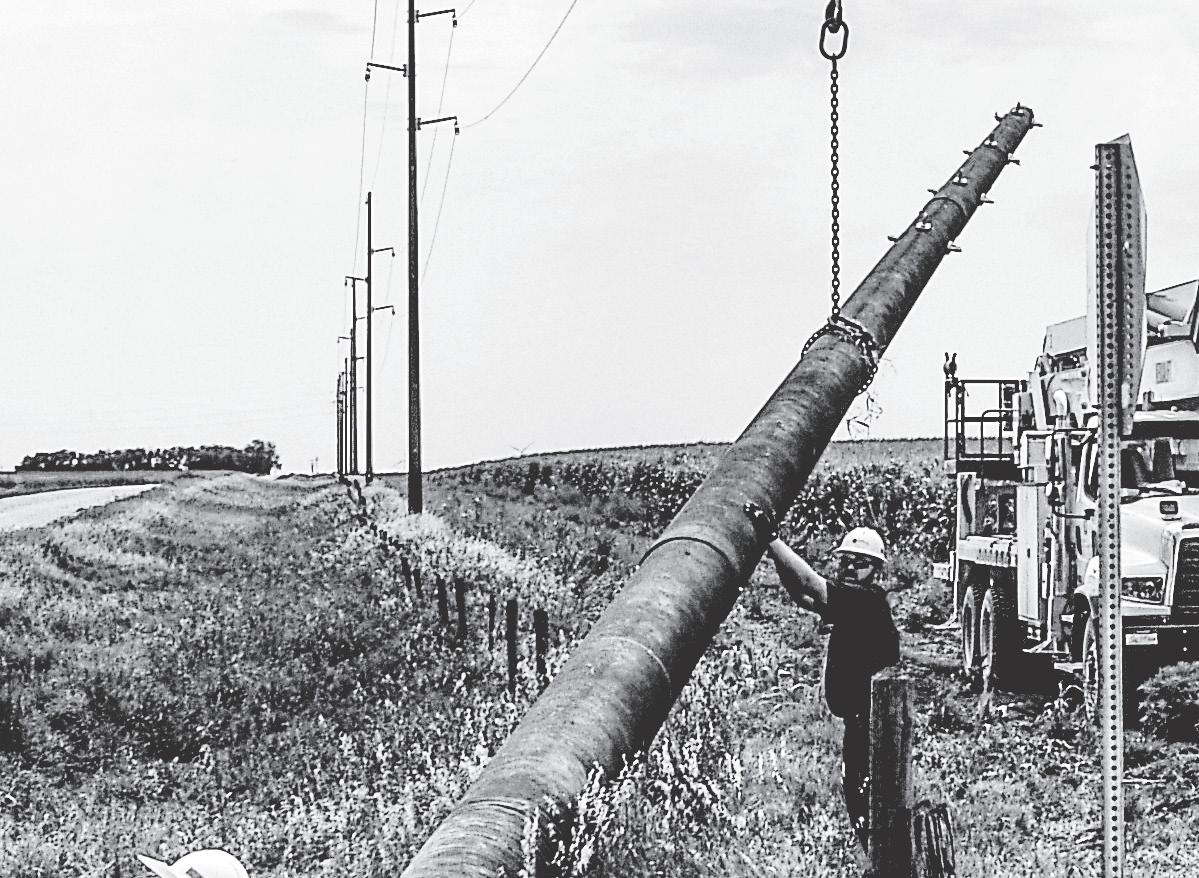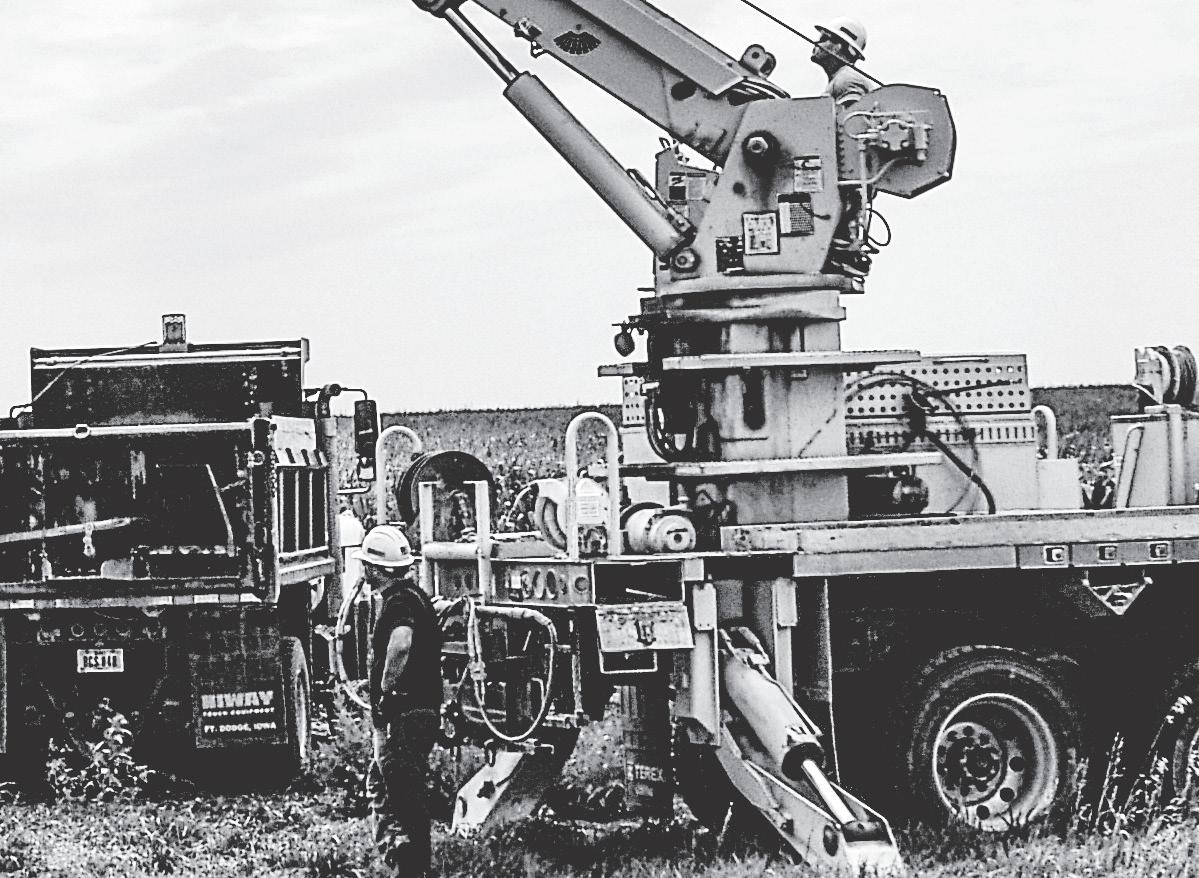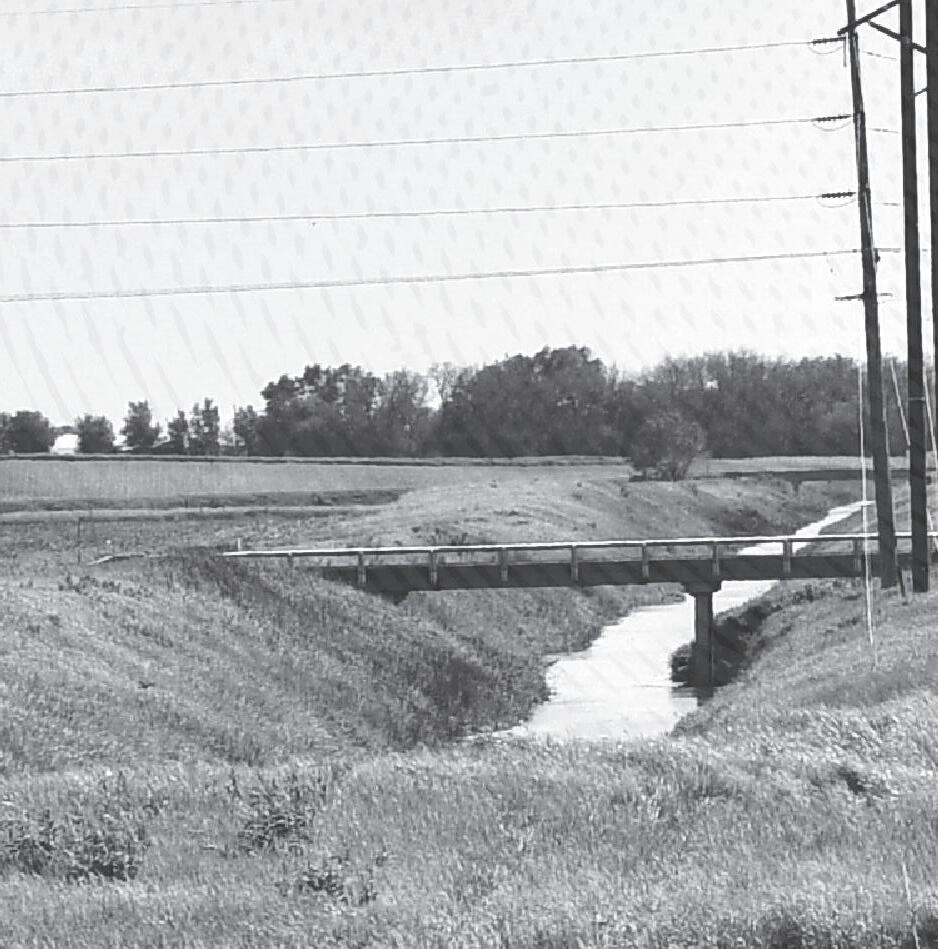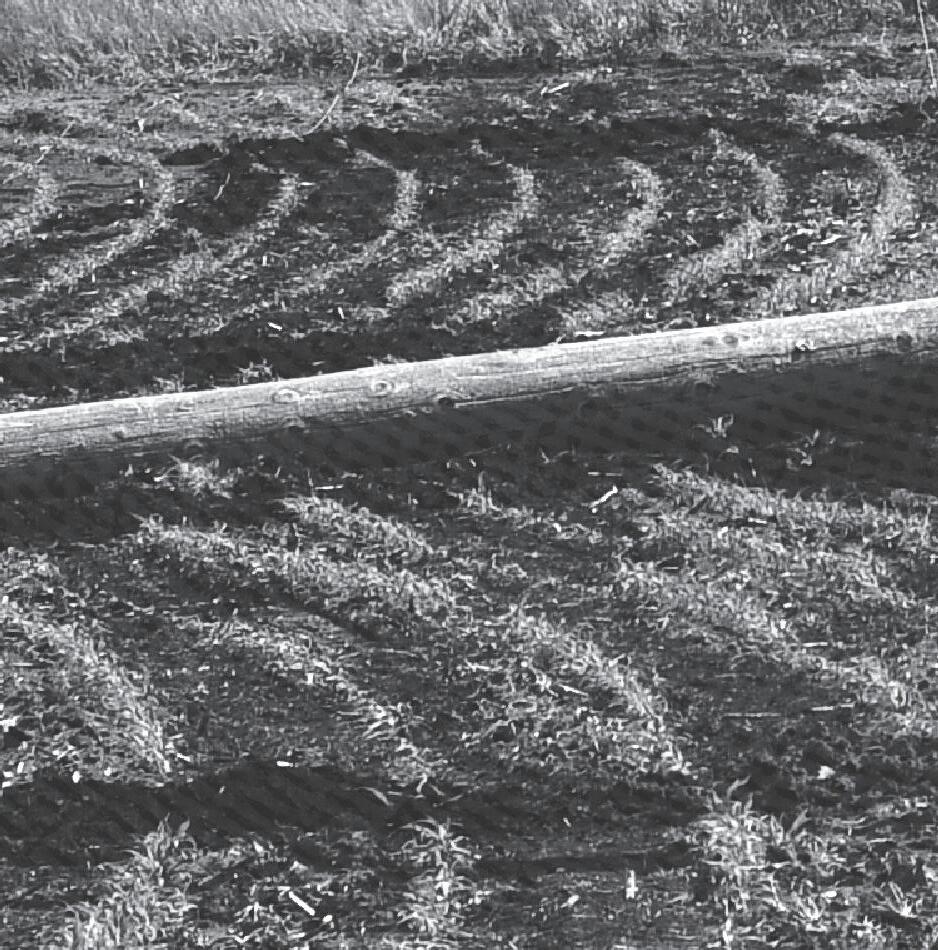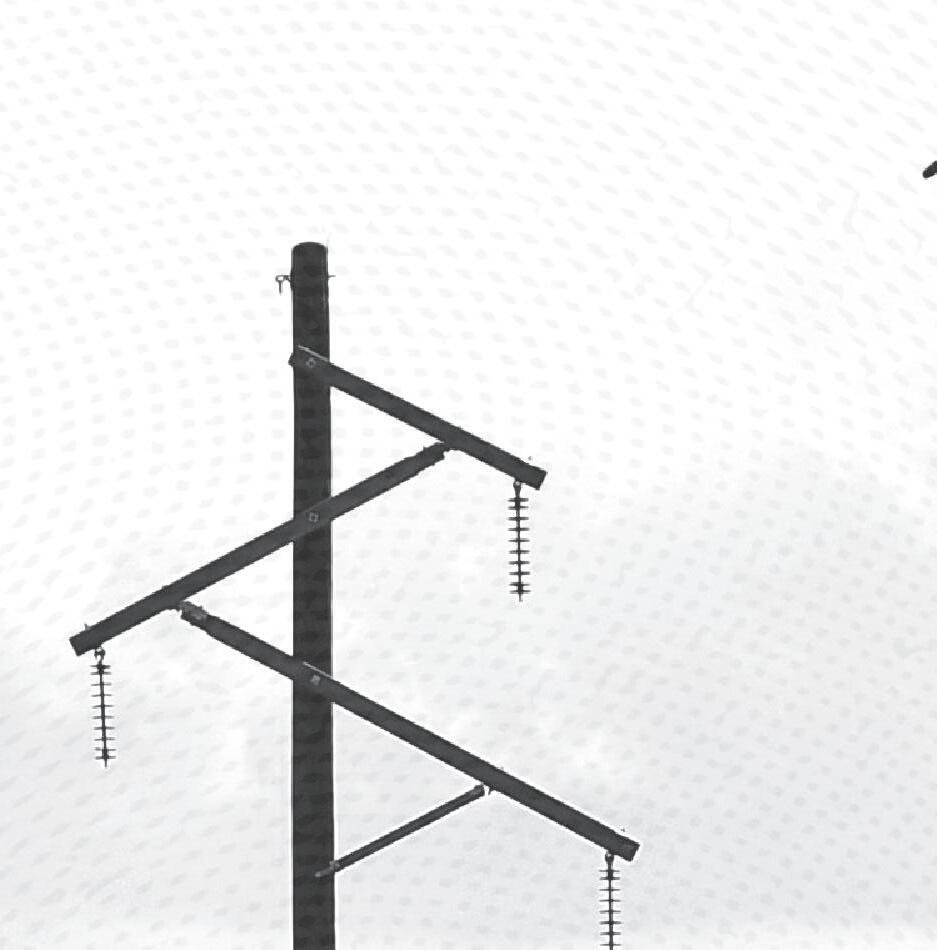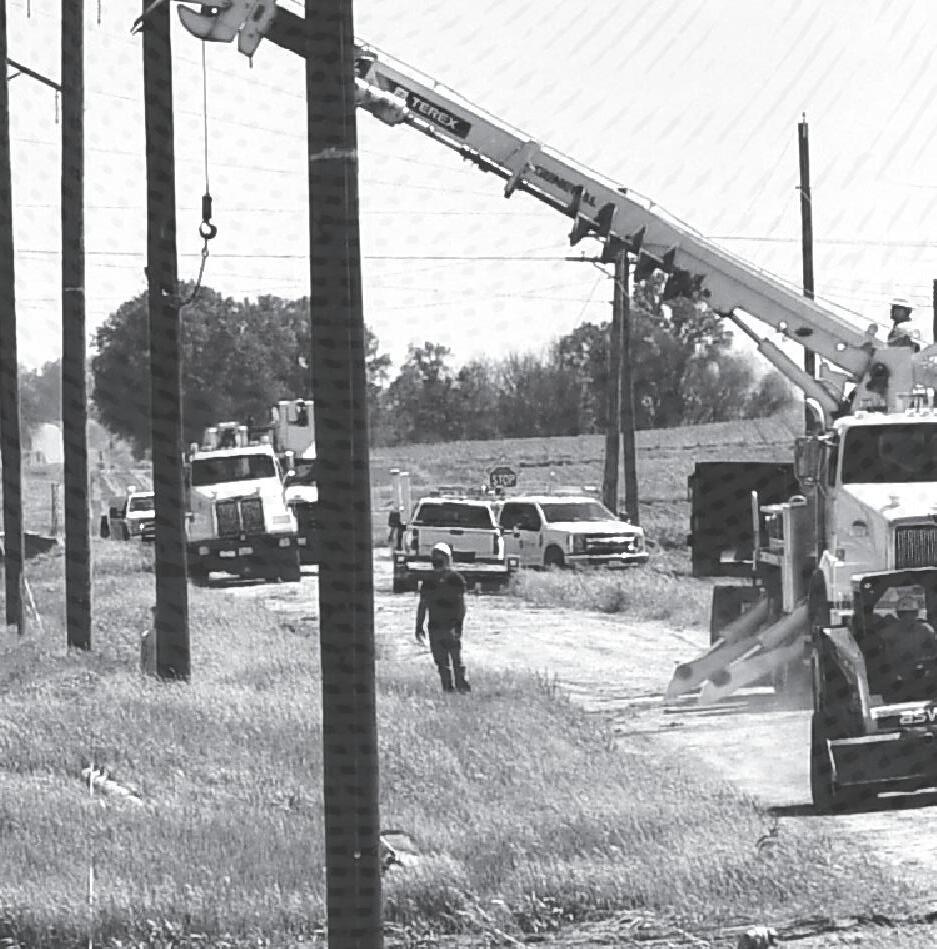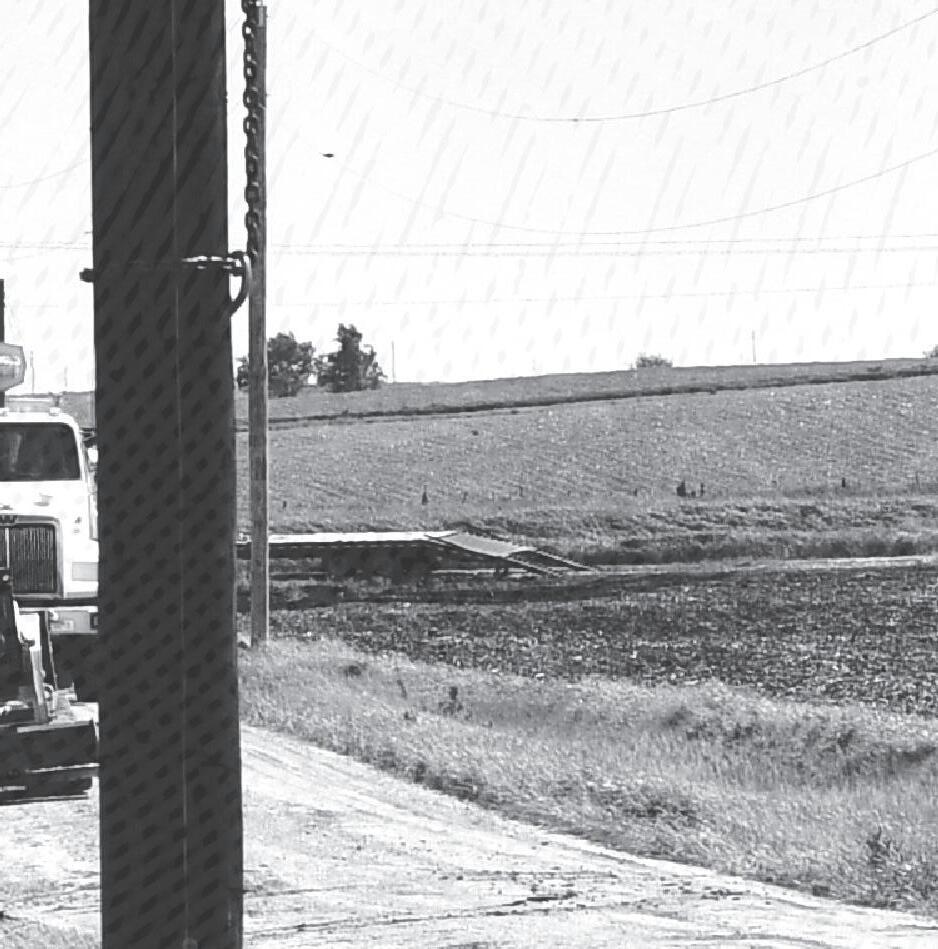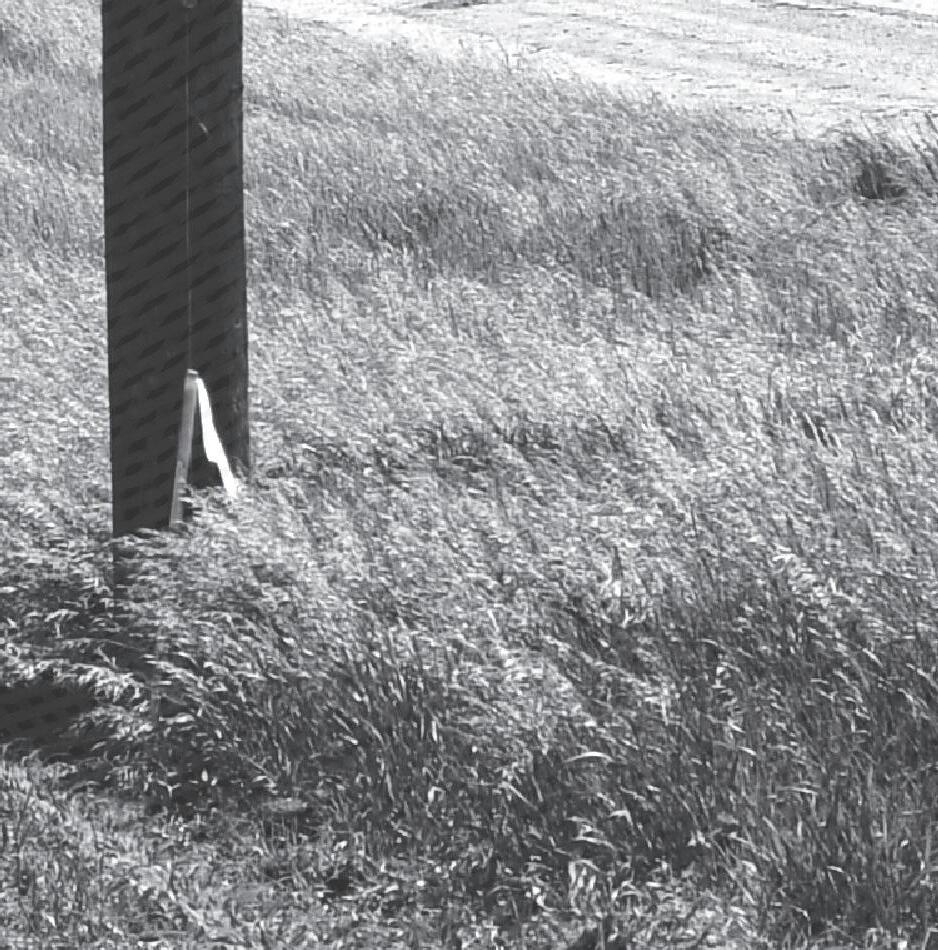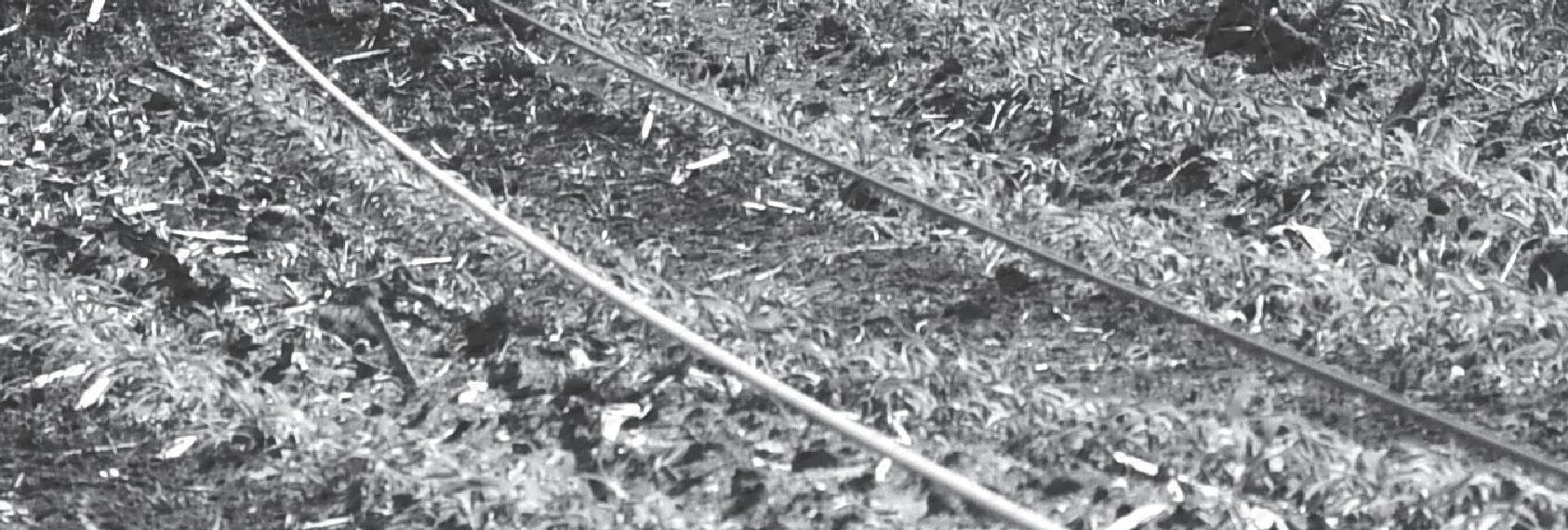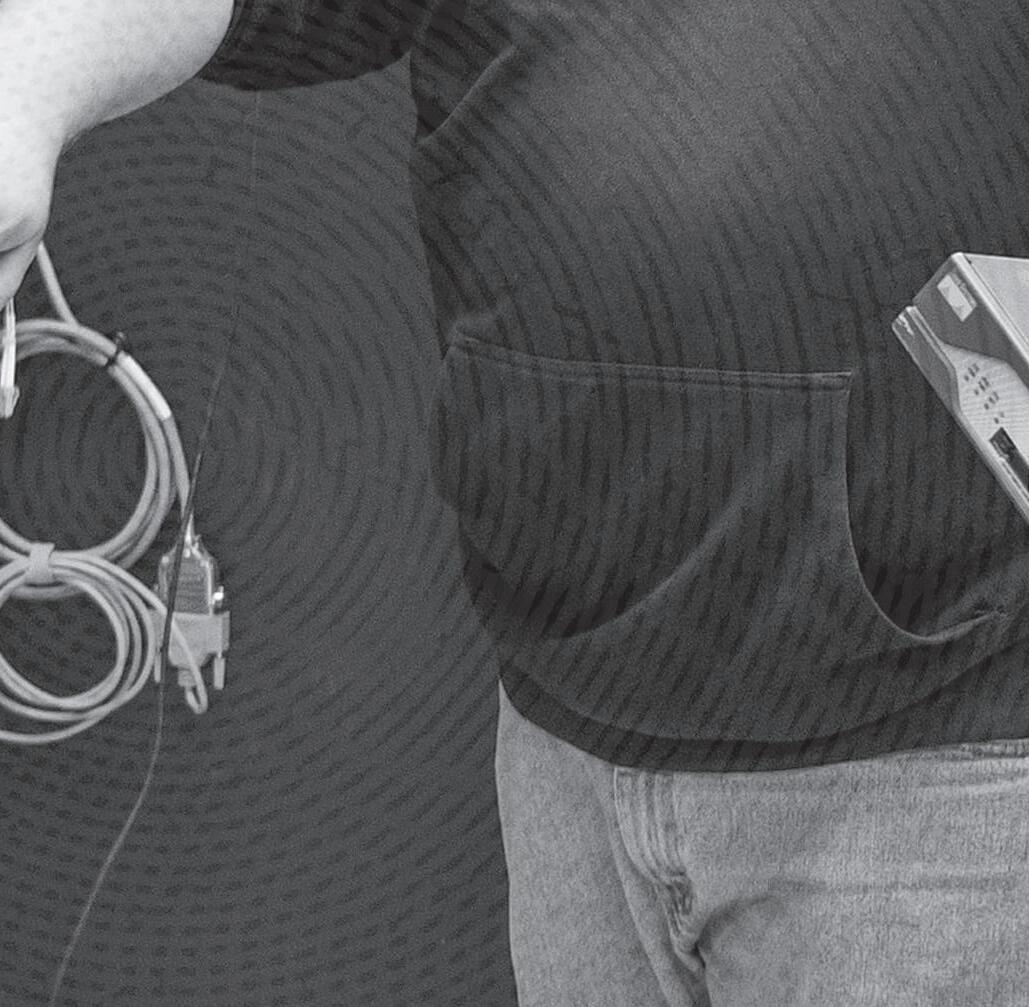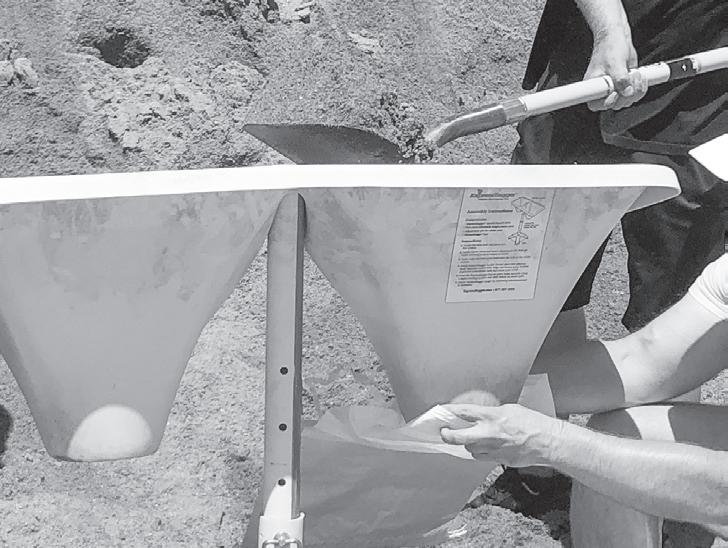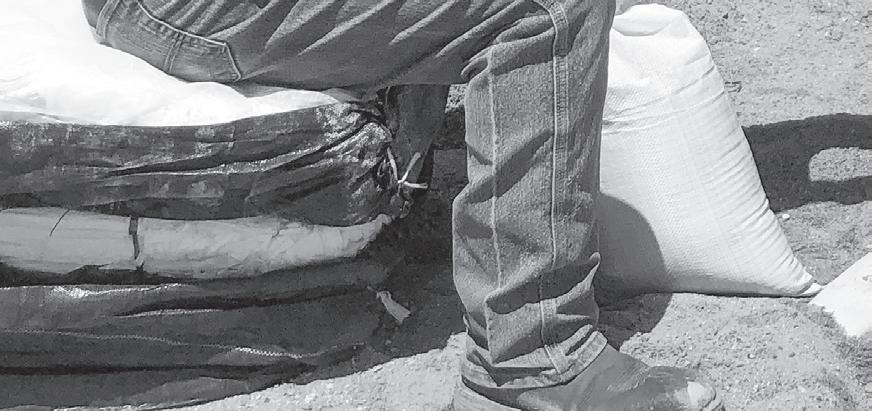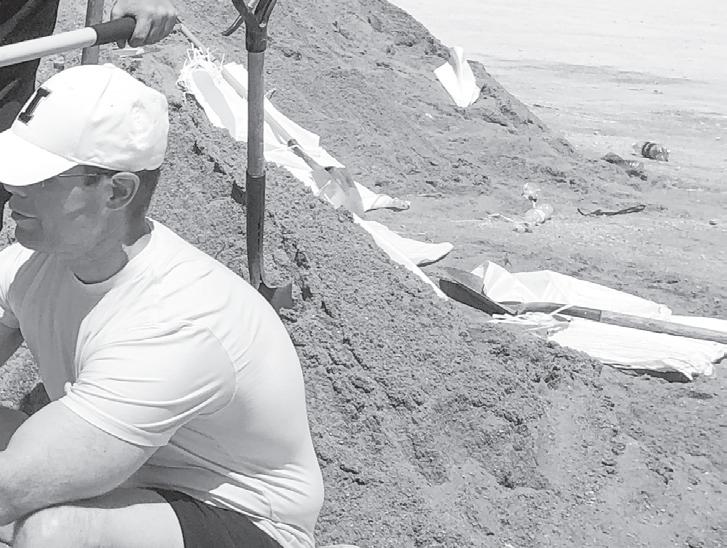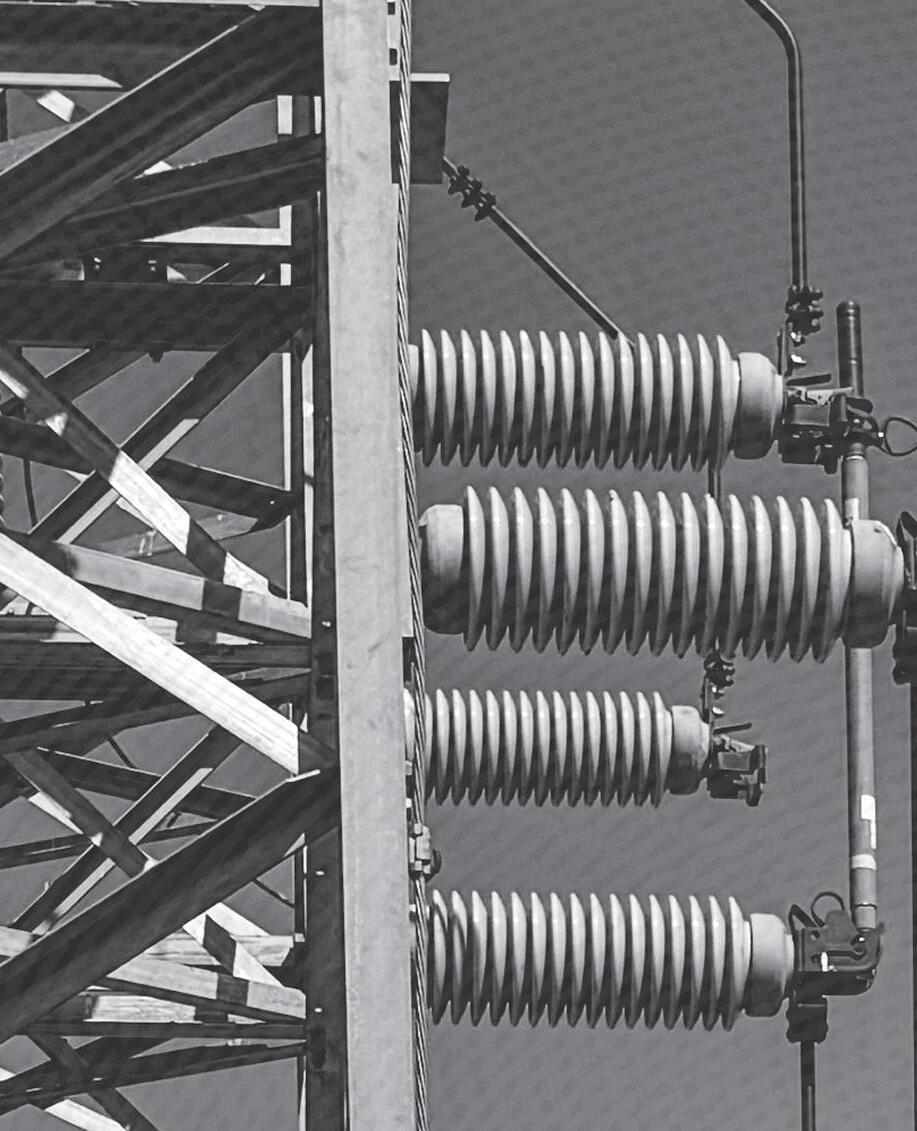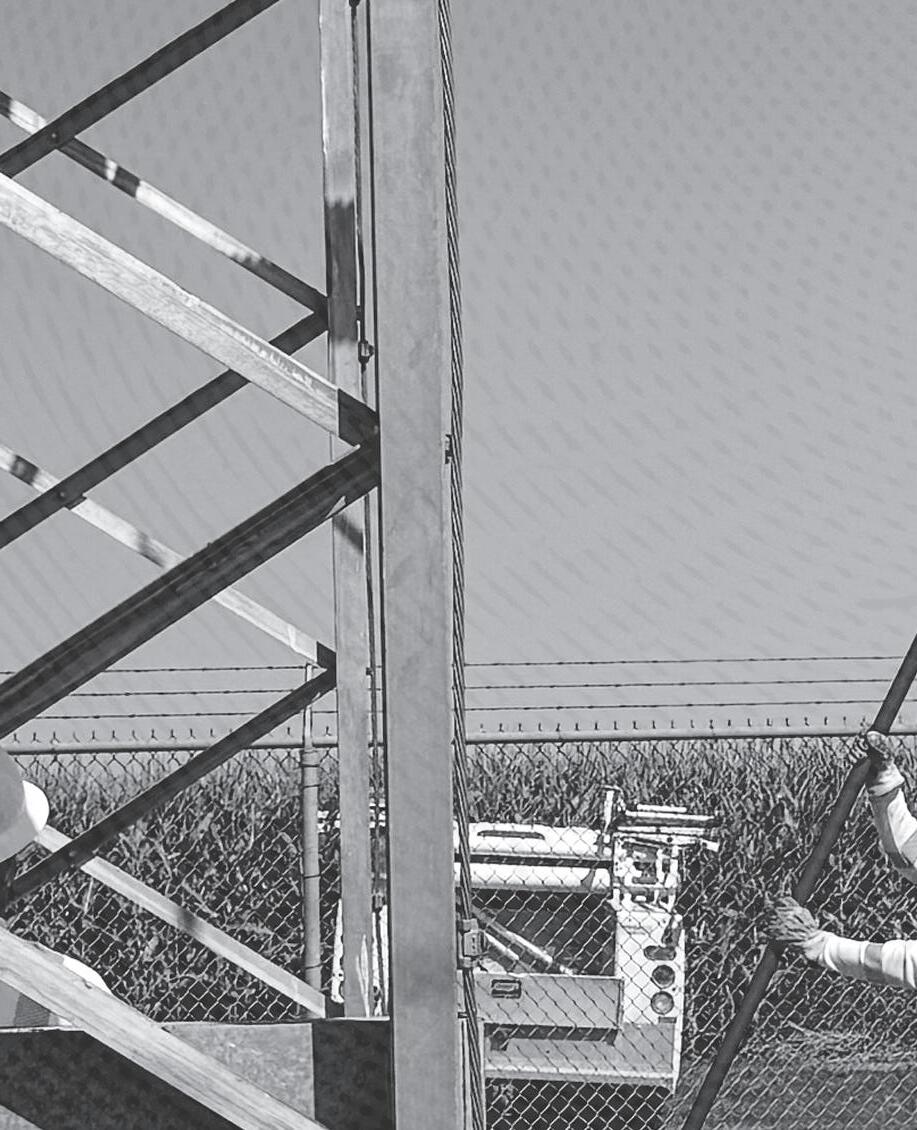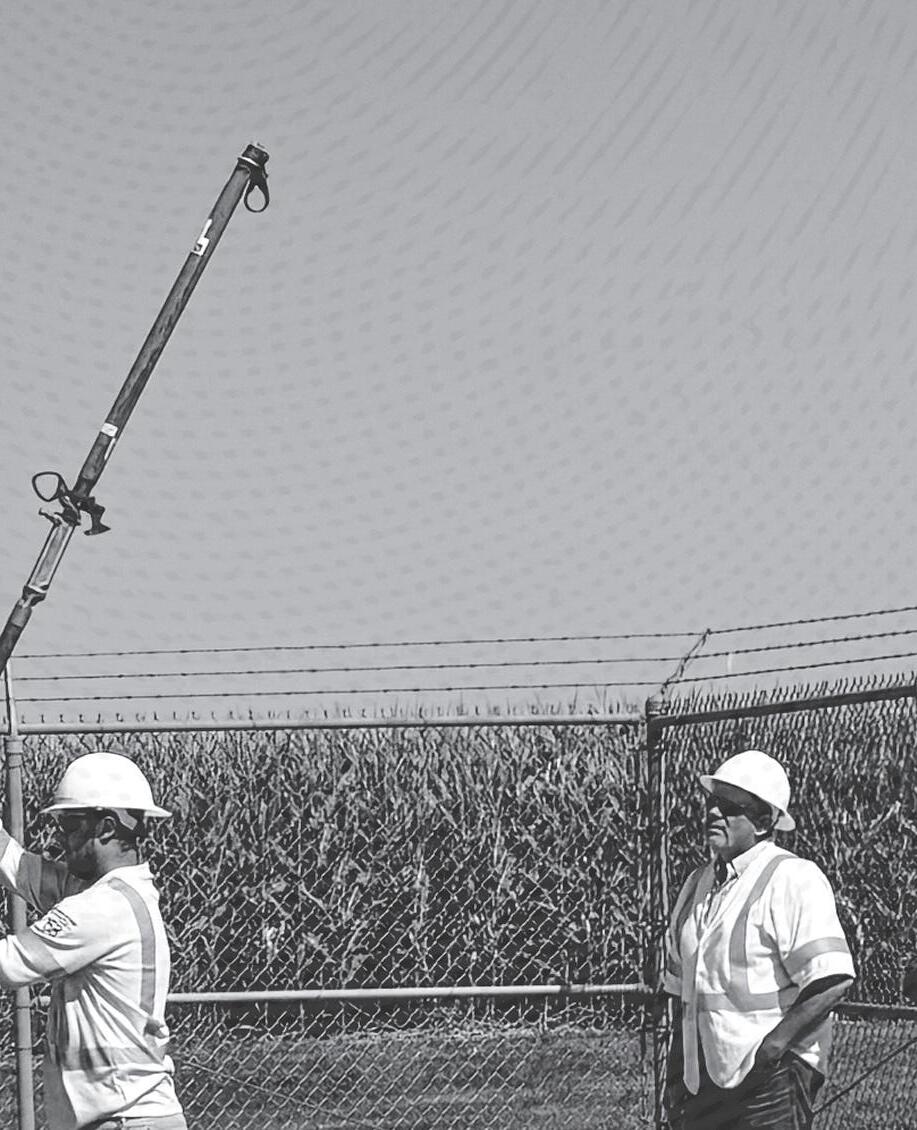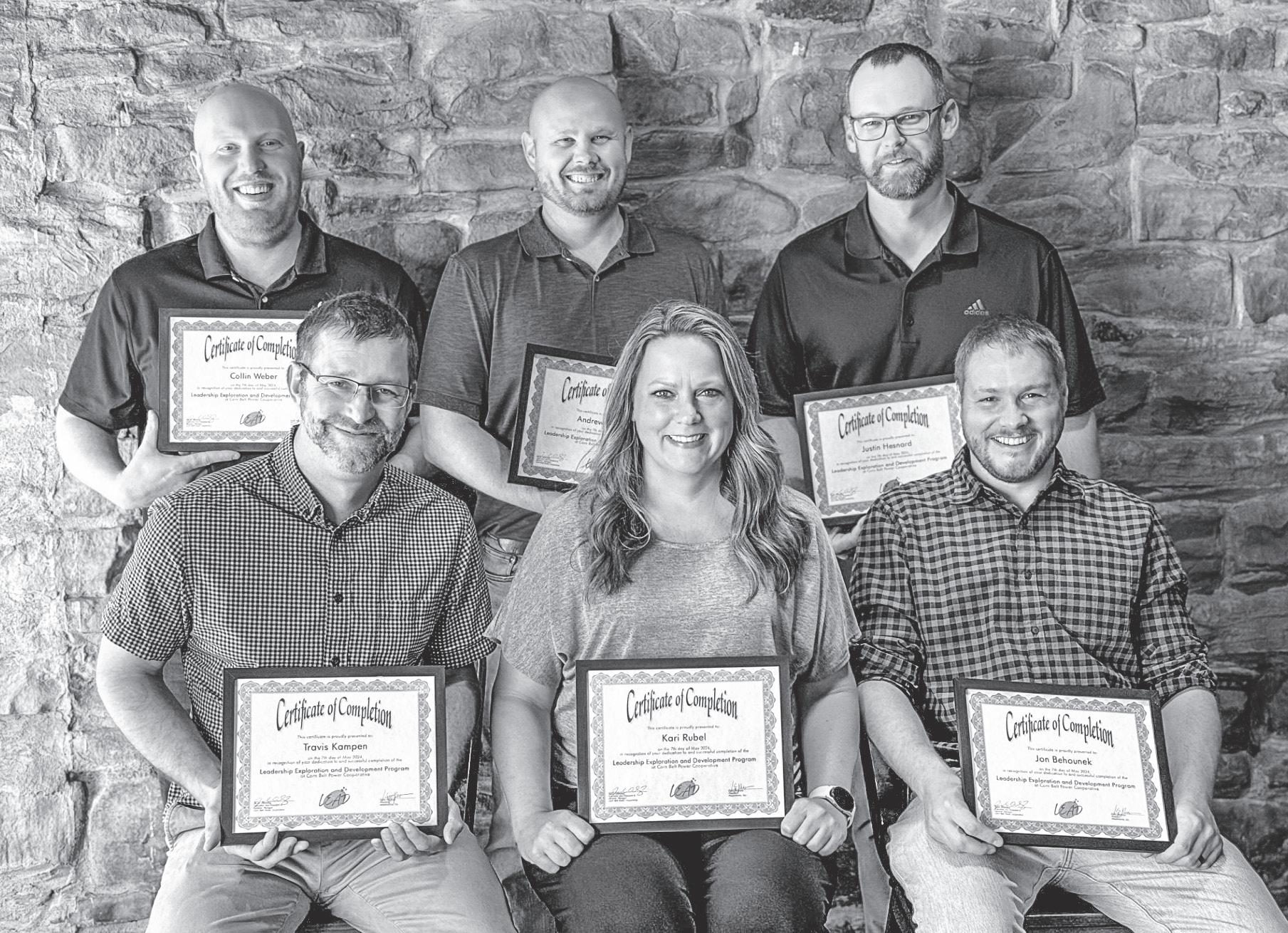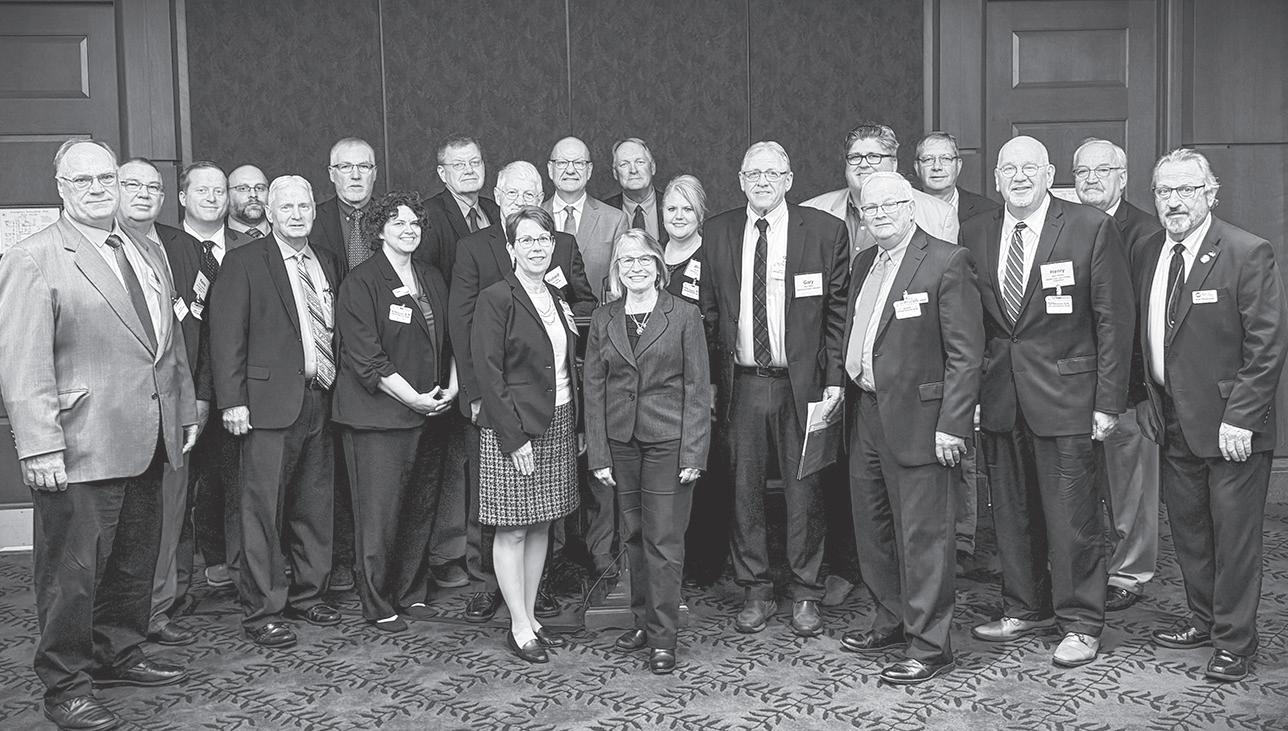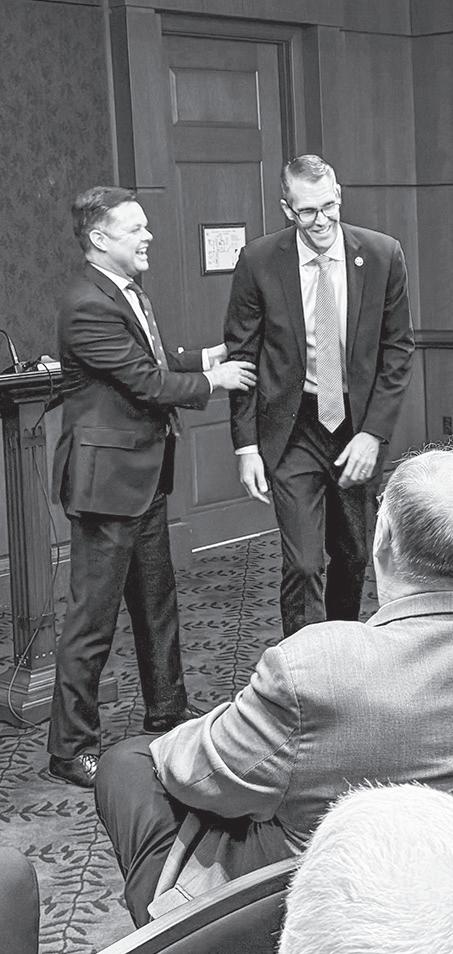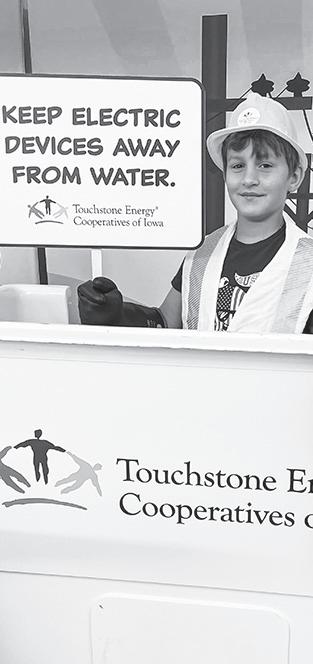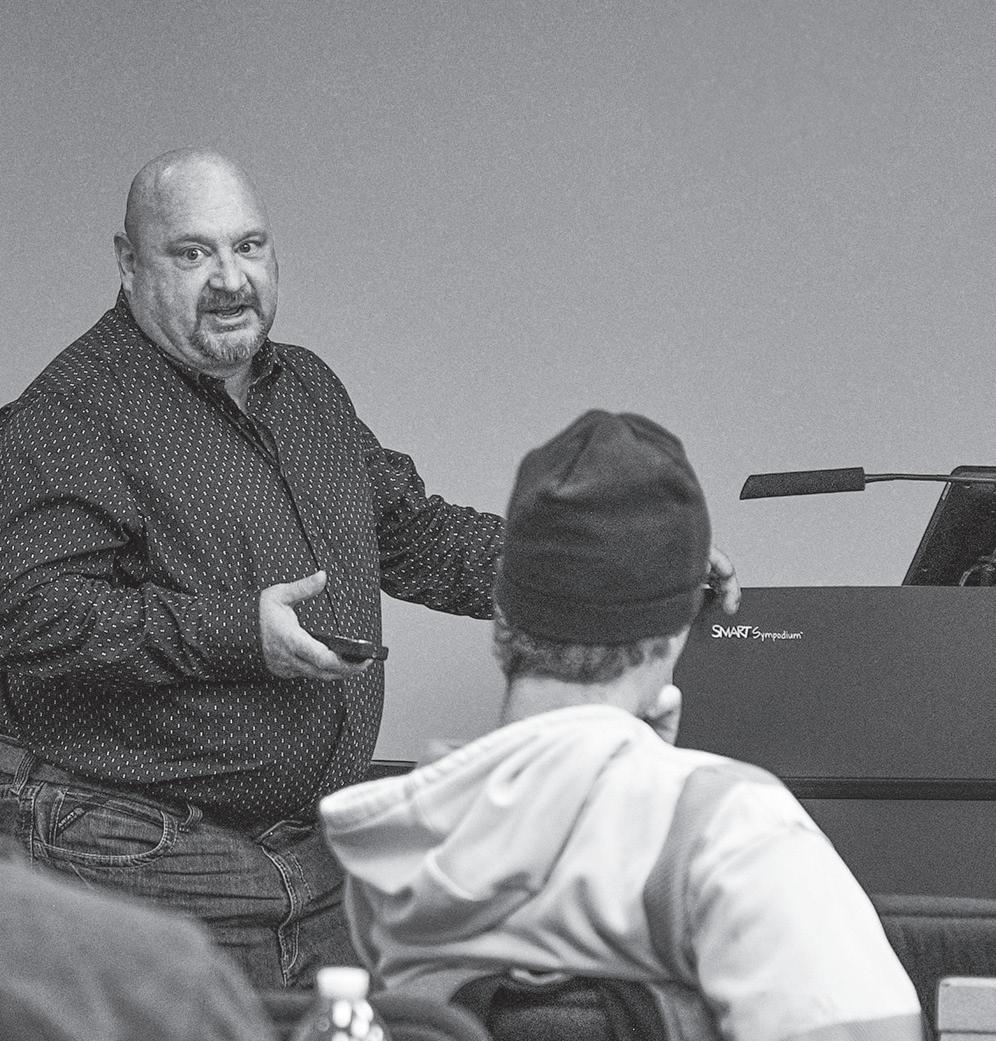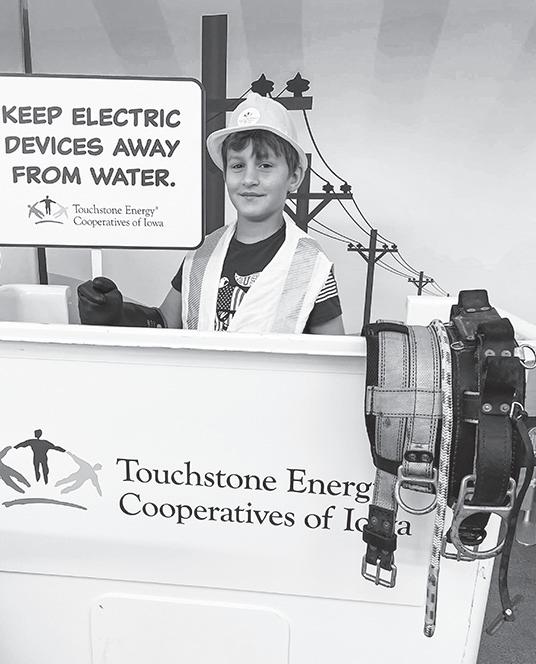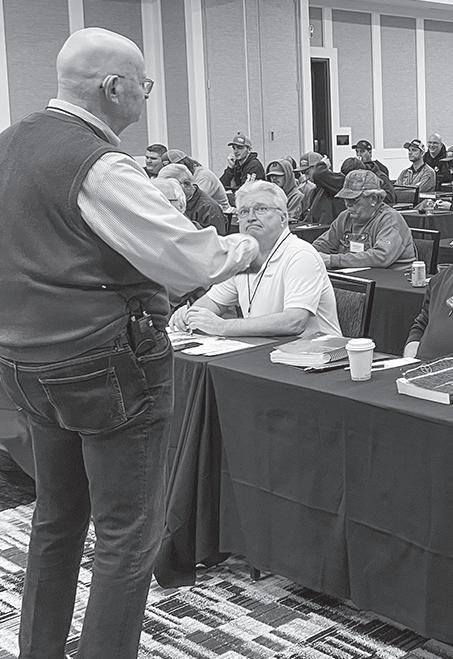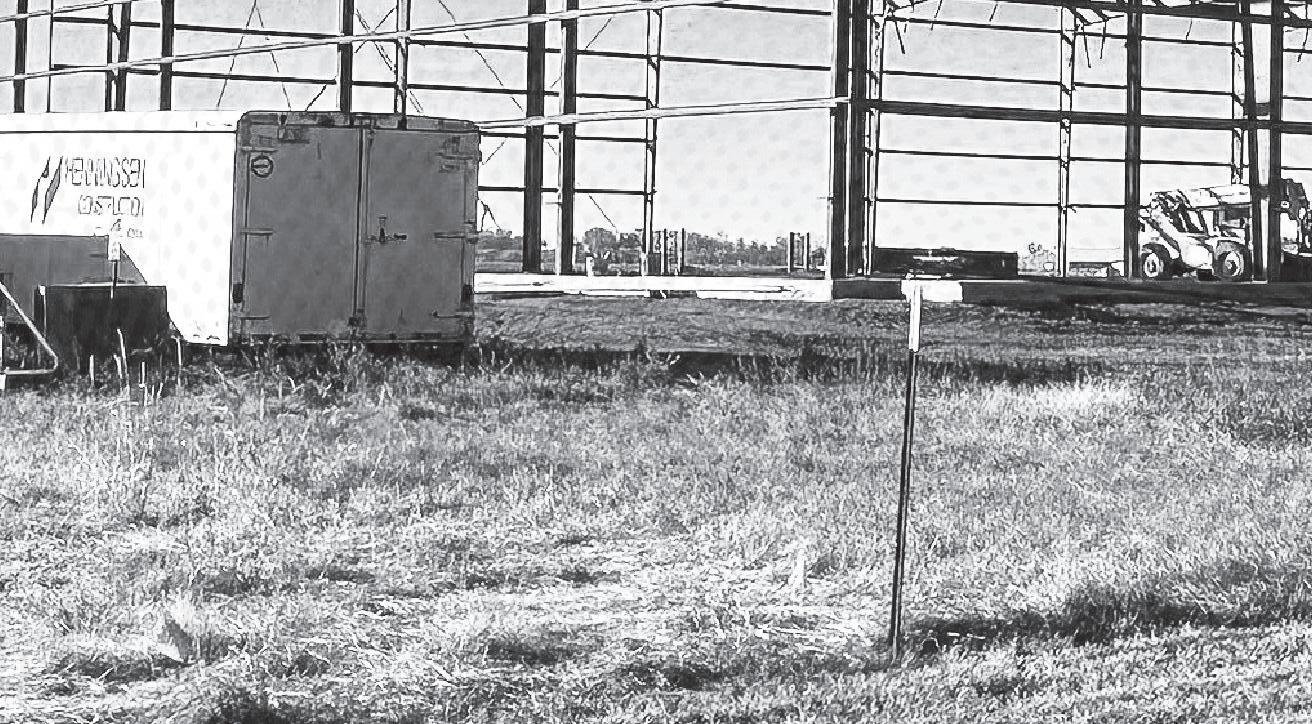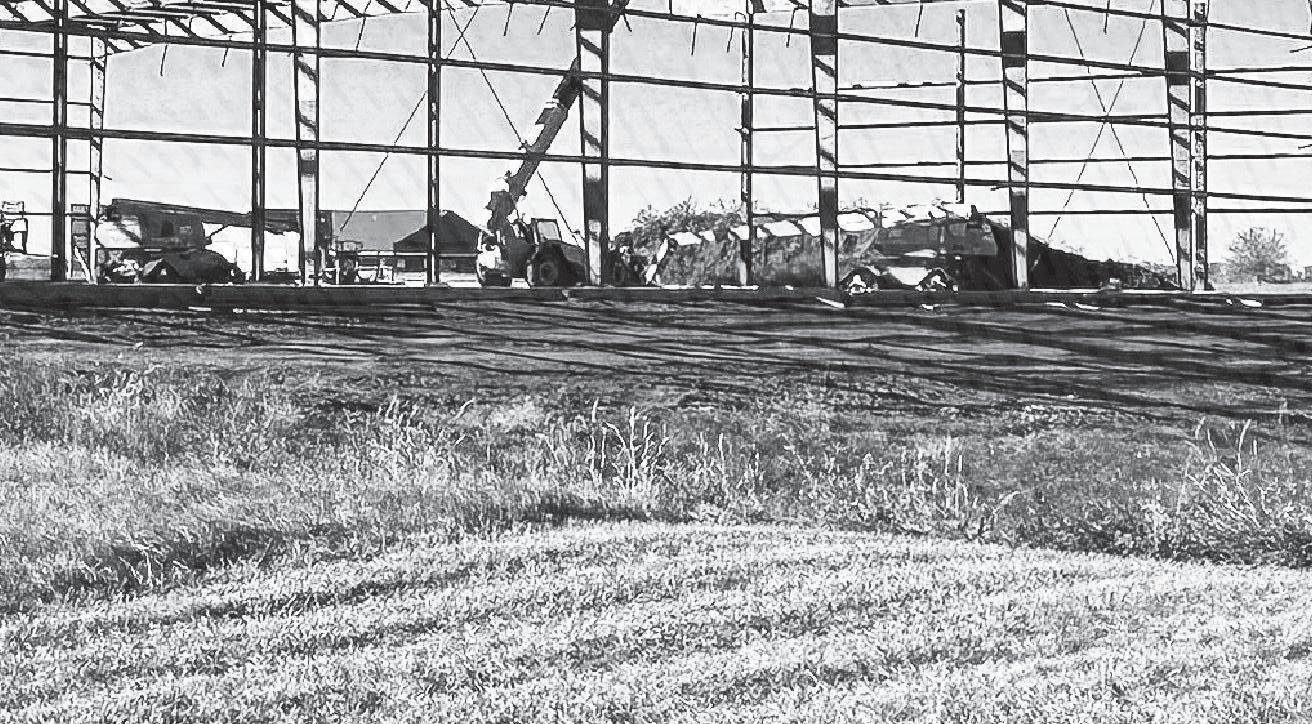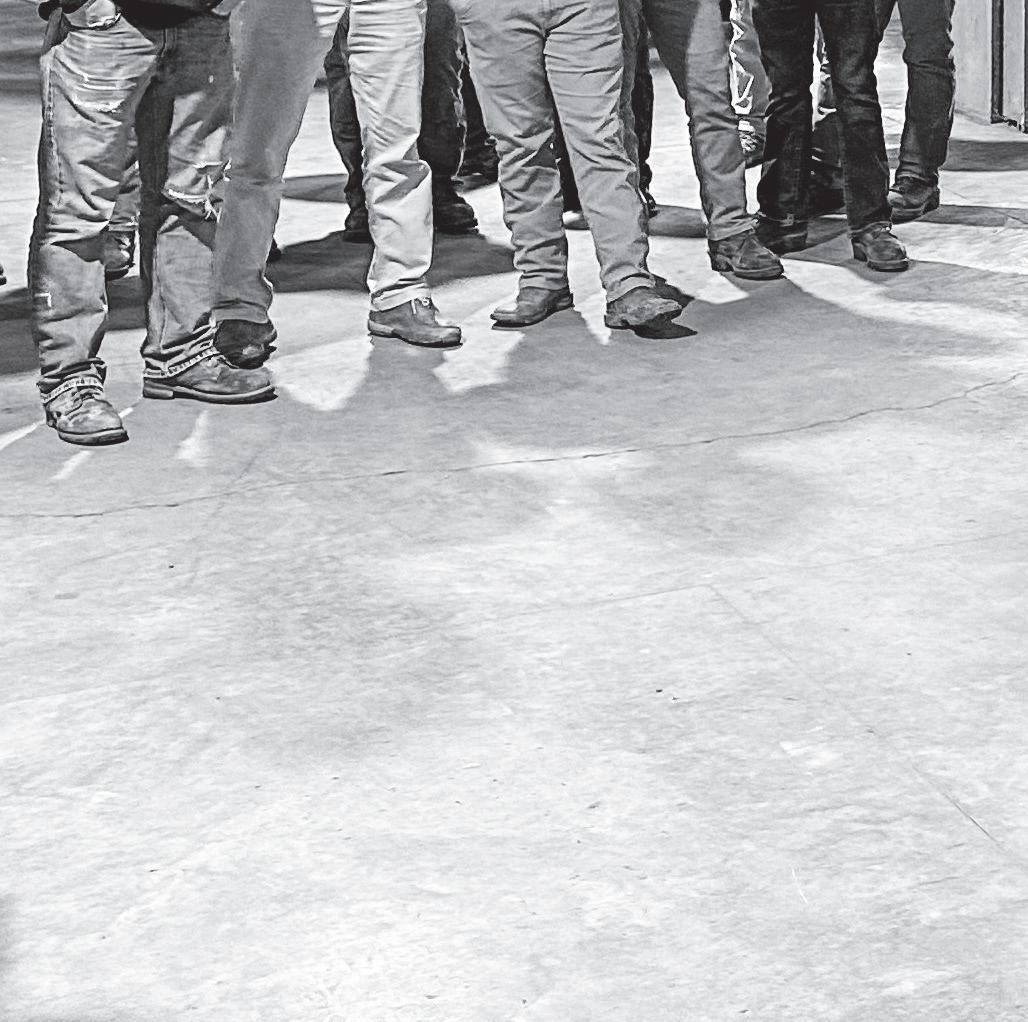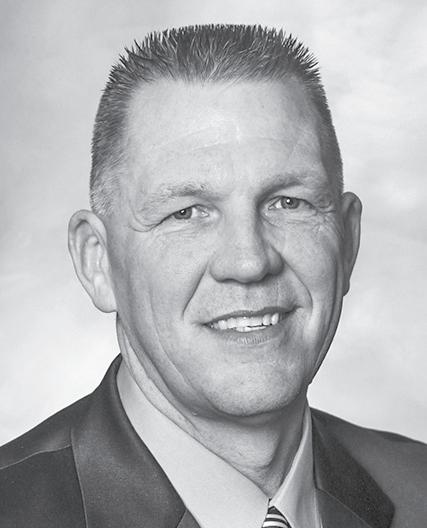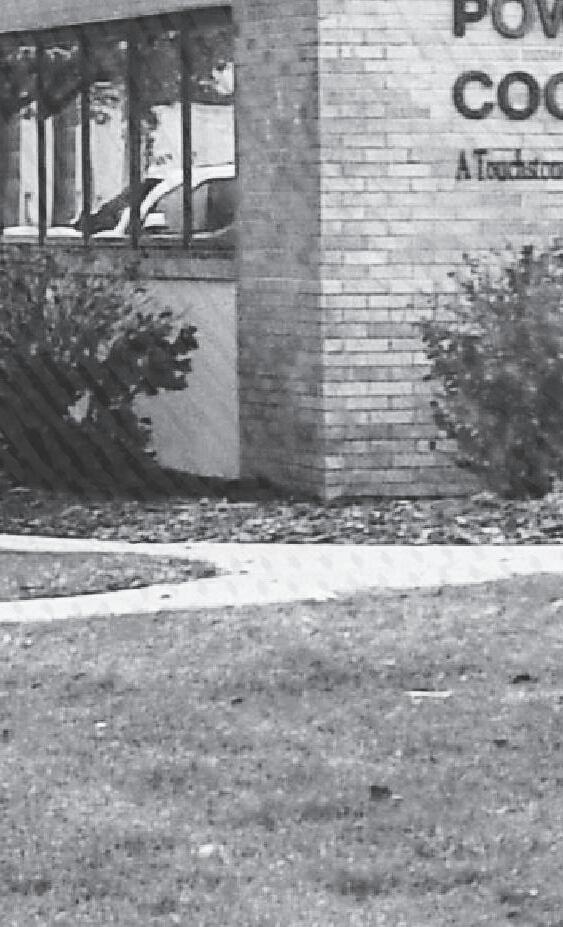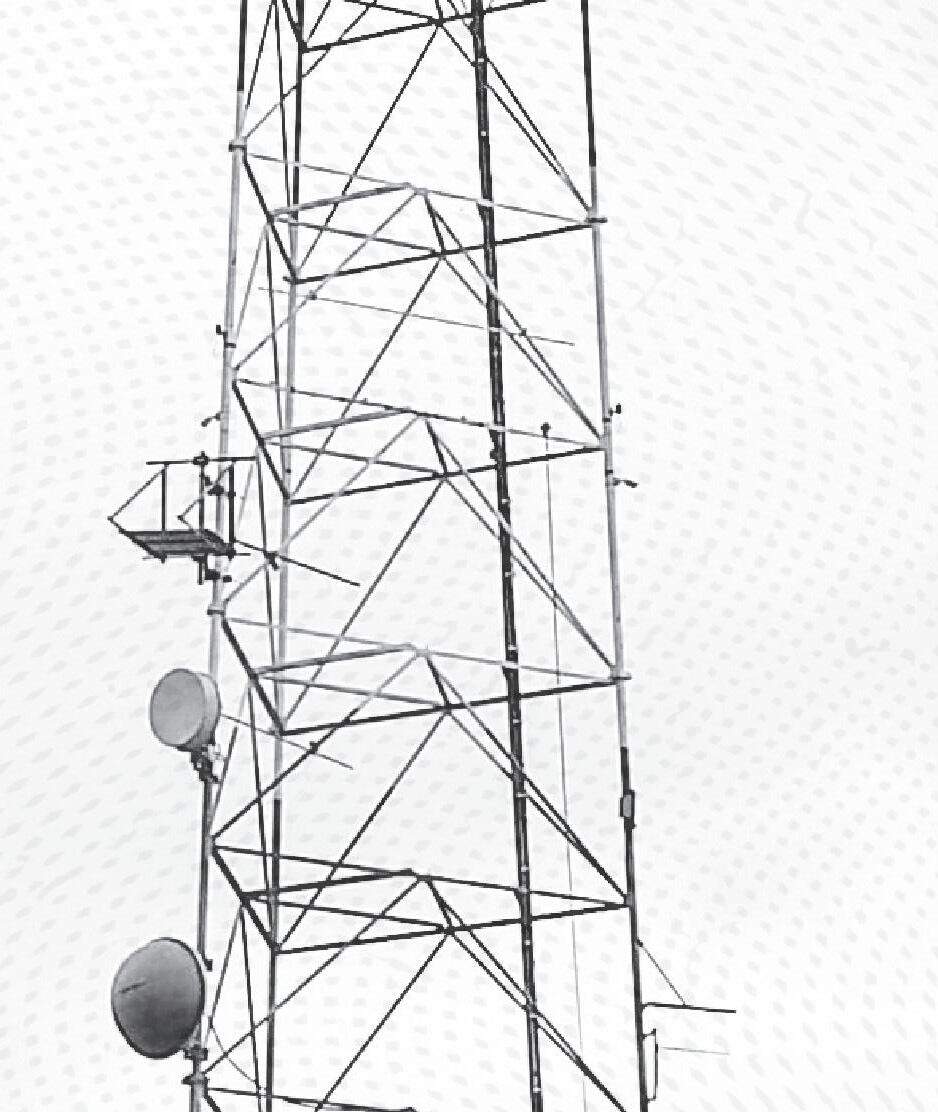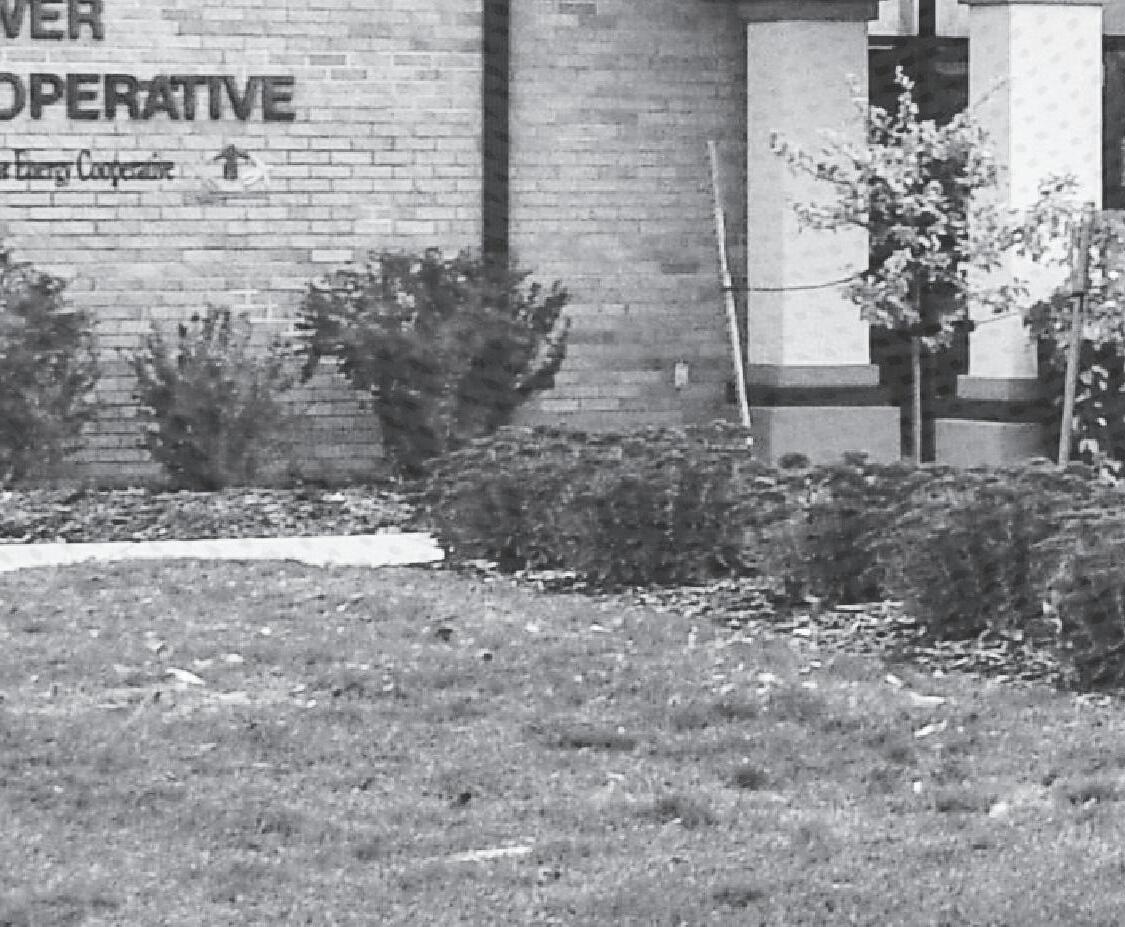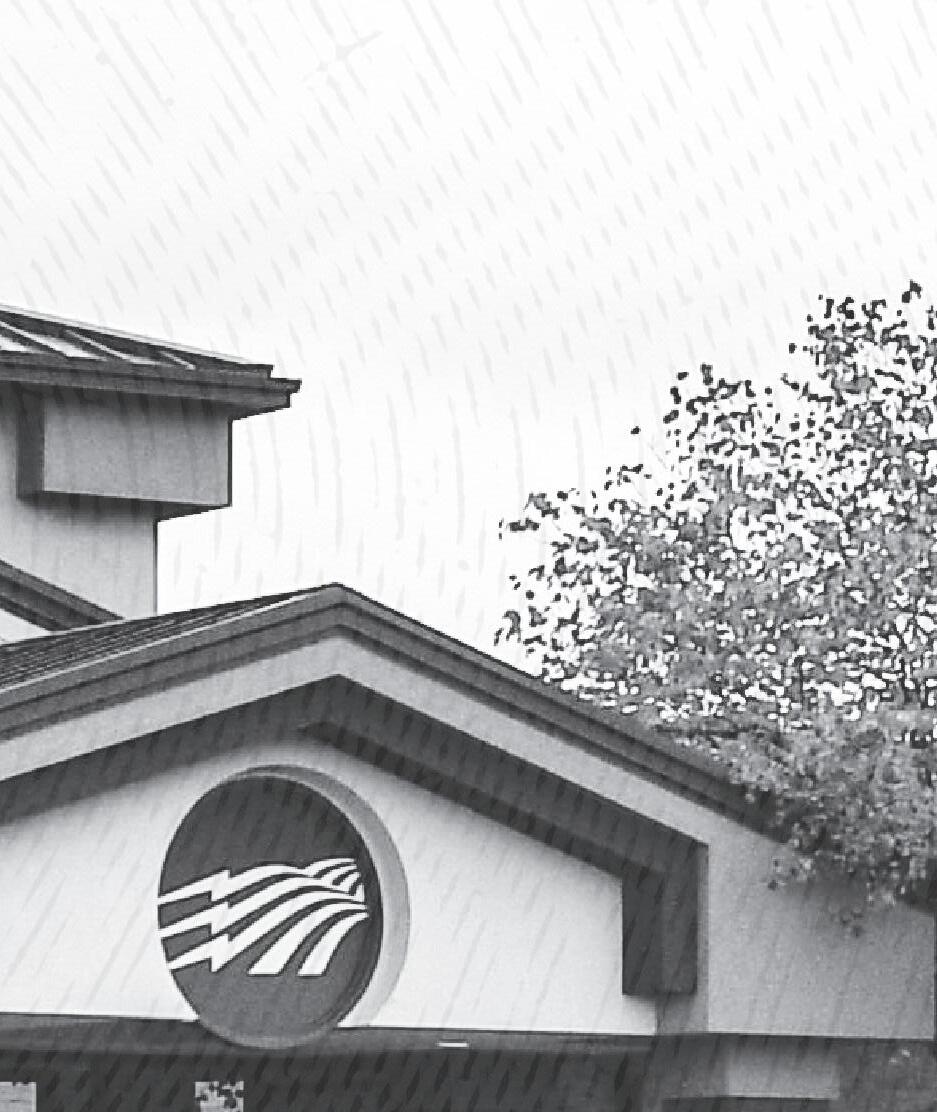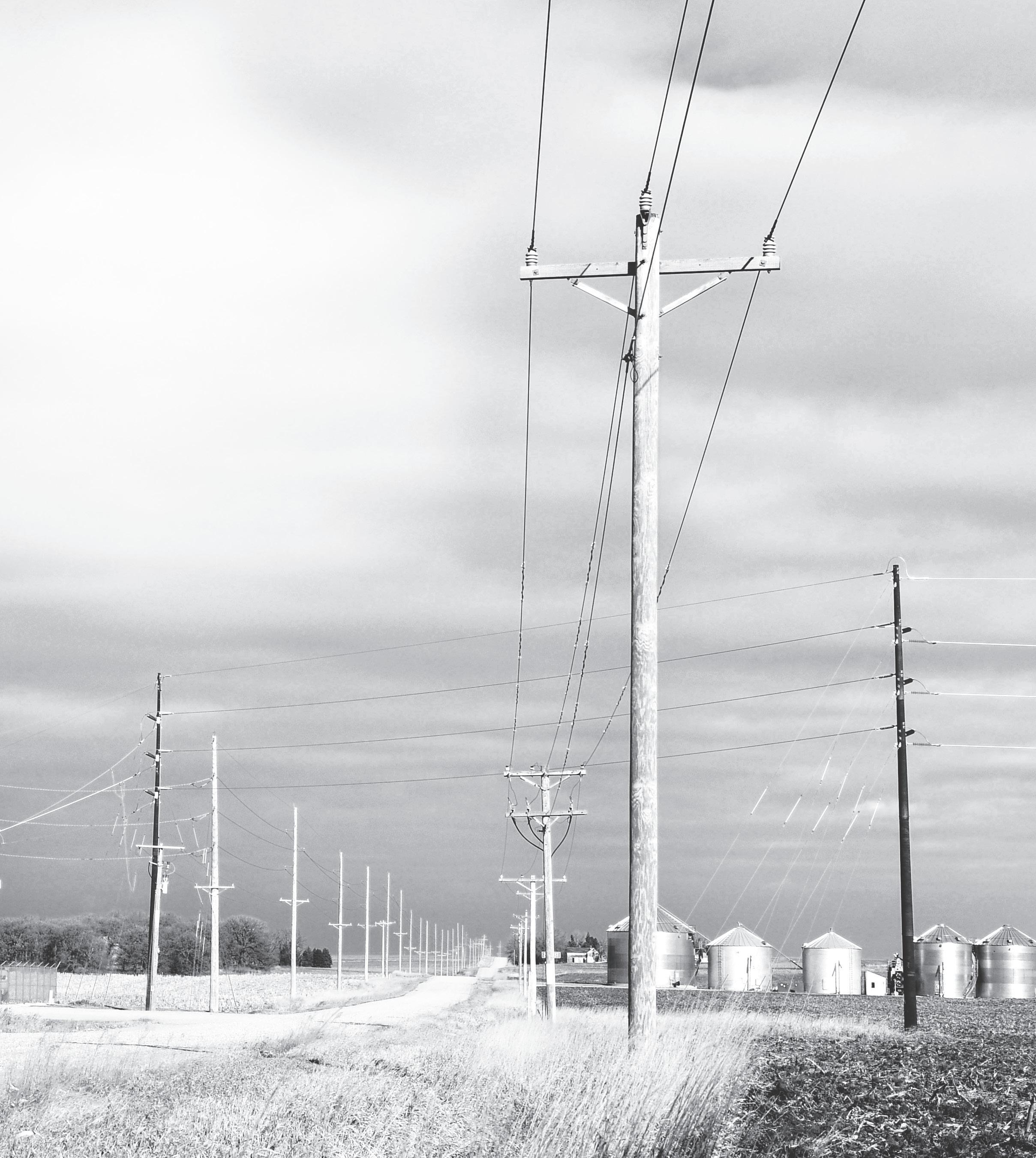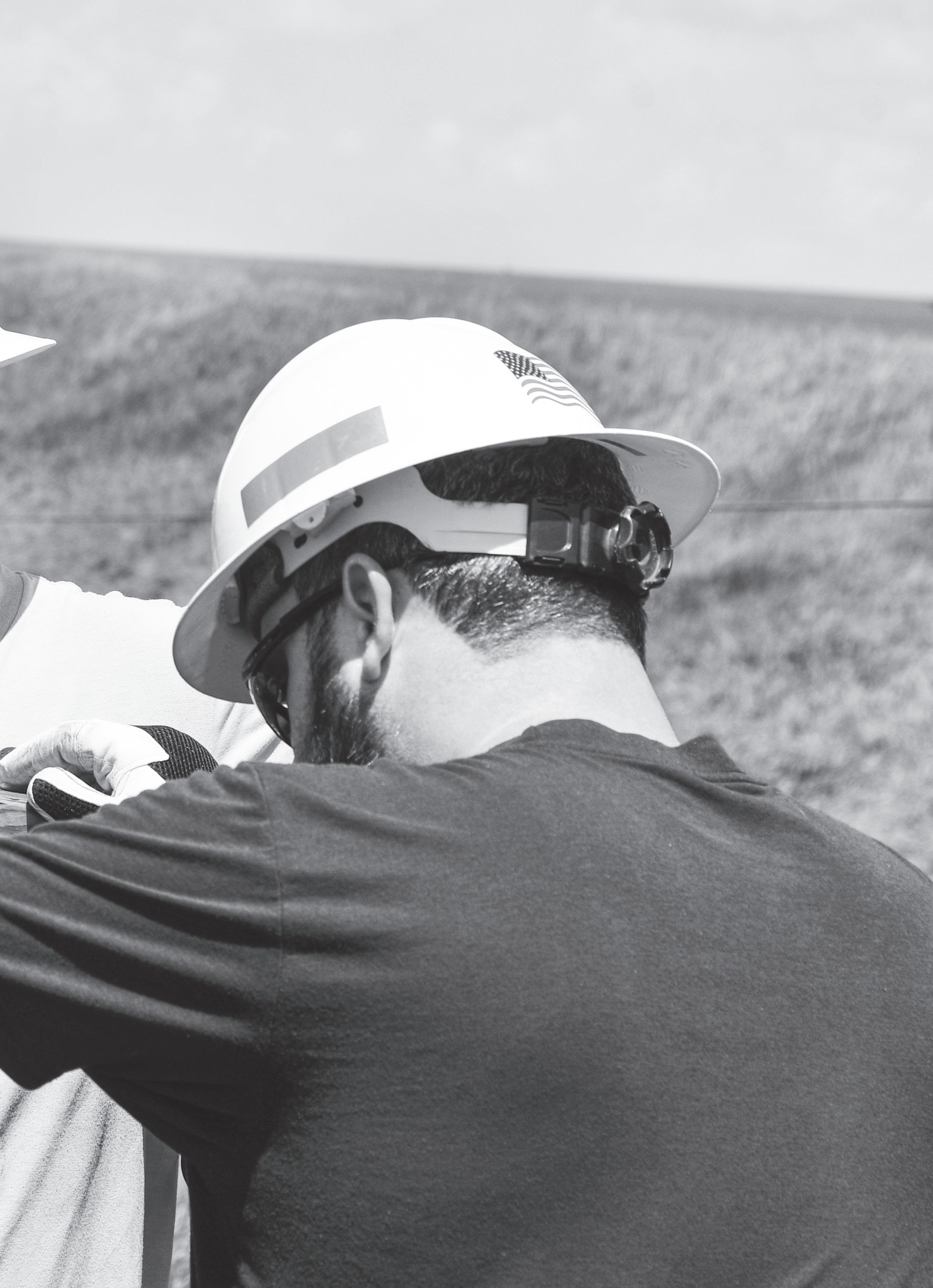VALUES
Integrity, Accountability, Commitment, Teamwork.
To the Board of Directors
Corn Belt Power Cooperative Humboldt, Iowa
Independent Auditor’s Report
Report on the Audit of the Financial Statements
Opinion
We have audited the financial statements of Corn Belt Power Cooperative, which comprise the balance sheets as of December 31, 2024 and 2023, and the related statements of revenue and expenses, membership capital, and cash flows for the years then ended, and the related notes to the financial statements.
In our opinion, the accompanying financial statements referred to above present fairly, in all material respects, the financial position of Corn Belt Po wer Cooperative as of December 31, 2024 and 2023, and the results of its operations and its cash flows for the years then ended in accordance with accounting principles generally accepted in the United States of America.
Basis for Opinion
We conducted our audits in accordance with auditing standards generally accepted in the United States of America (GAAS) and the standards applicable to financial audits contained in Government Auditing Standards, issued by the Comptroller General of the Un ited States Our responsibilities under those standards are further described in the Auditor’s Responsibilities for the Audit of the Financial Statements section of our report. We are required to be independent of Corn Belt Power Cooperative and to meet our other ethical responsibilities, in accordance with the relevant ethical requirements relating to our audits. We believe that the audit evid ence we have obtained is sufficient and appropriate to provide a basis for our audit opinion.
Responsibilities of Management for the Financial Statements
Management is responsible for the preparation and fa ir presentation of these financial statements in accordance with accounting principles generally accepted in the United States of America; and for the design, implementation, and maintenance of internal control relevant to the preparation and fair presentation of financial statements that are free from material misstatement, whether due to fraud or error.
In preparing the financial statements, management is required to evaluate whether there are conditions or events, considered in the aggregate, that raise substantial doubt about Corn Belt Power Cooperative’s ability to continue as a going concern for one year after the date that the financial statements are available to be issued.
Auditor’s Responsibilities for the Audit of the Financial Statements
Our objectives are to obtain reasonable assurance about whether the financial statements as a whole are free from material misstatement, whether due to fraud or error, and to issue an auditor’s report that includes our opinion. Reasonable assurance is a high level of assurance but is not absolute assurance and therefore is not a guarantee that an audit conducted in accordance with GAAS and Government Auditing Standards will always detect a material misstatement when it exists. The risk of not detecting a material misstatement resulting from fraud is higher than for one resulting from error, as fraud may involve collusion, forgery, intentional omissions, misrepresentations, or the override of internal control. Misstatements are considered material if there is a substantial likelihood that, individually or in the aggregate, they would influence the judgment made by a reasonable user based on the financial statements.
In performing an audit in accordance with GAAS and Government Auditing Standards, we:
Exercise professional judgment and maintain professional skepticism throughout the audit.
Identify and assess the risks of material misstatement of the financial statements, whether due to fraud or error, and design and perform audi t procedures responsive to those risks. Such procedures include examining, on a test basis, evidence regarding the amounts and disclosures in the financial statements.
Obtain an understanding of internal control relevant to the audit in order to design audit procedures that are appropriate in the circumstan ces, but not for the purpose of expressing an opinion on the effectiveness of Corn Belt Power Cooperative’s internal co ntrol. Accordingly, no such opinion is expressed.
Evaluate the appropriateness of accounting policies used and the reasonableness of significant accounting estimates made by management, as well as evaluate the overall presentation of the financial statements.
Conclude whether, in our judgment, there are conditions or events, considered in the aggregate, that raise substantial doubt about Corn Belt Power Cooperative’s ability to continue as a going concern for a reasonable period of time.
We are required to communicate with those charged with governance regarding, among other matters, the planned scope and timing of the audit, significant audit findings, and certain internal control–related matters that we identified during the audit.
Other Reporting Required by Government Auditing Standards
In accordance with Government Auditing Standards, we have also issued a report dated February 28, 2025 on our consideration of Corn Belt Power Cooperative’s internal control over financial reporting and on our tests of its compliance with certain provisions of laws, regulations, contracts, grant agreements, and other matters. The purpose of that report is to de scribe the scope of our testing of internal control over financial reporting and compliance and the results of that testing, and not to provide an opinion on the internal control over financial reporting or on compliance. That report is an integral part of an audit performed in accordance with Government Auditing Standards in considering Corn Belt Power Cooperative’s internal control over financial reporting and compliance.
Sioux Falls, South Dakota February 28, 2025
ASSETS CORN BELT POWER COOPERATIVE Balance Sheets December 31, 2024 and 2023
See accompanying notes to financial statements.
CORN BELT POWER COOPERATIVE Balance Sheets
December 31, 2024 and 2023
MEMBERSHIP CAPITAL AND LIABILITIES
See accompanying notes to financial statements.
CORN BELT POWER COOPERATIVE Statements of Revenue and Expenses Years ended December 31, 2024 and 2023
See accompanying notes to financial statements.
CORN BELT POWER COOPERATIVE Statements of Cash Flows Years ended December 31, 2024 and 2023
CASH FLOWS FROM FINANCING ACTIVITIES:
See accompanying notes to financial statements.
CORN BELT POWER COOPERATIVE Statements of Cash Flows Years ended December 31, 2024 and 2023
INVESTING AND FINANCING ACTIVITY:
SUPPLEMENTAL DISCLOSURE OF CASH FLOW INFORMATION:
SUPPLEMENTAL DISCLOSURE OF NONCASH INVESTING ACTIVITIES:
See accompanying notes to financial statements.
See accompanying notes to financial statements.
(1) Organization
CORN BELT POWER COOPERATIVE
Notes to Financial Statements
December 31, 2024 and 2023
Corn Belt Power Cooperative (the Cooperative) is a Rural Utilities Service (RUS) financed generation and transmission cooperative created and owned by nine distribution cooperatives and one municipal cooperative association. Electricity supplied by the Cooperative serves farms, small towns, and commercial and industrial businesses in northern Iowa.
The Cooperative's Board of Directors (Board of Directors) is composed of one representative from each member cooperative and is responsible for, among other things, establishing rates charged to the member cooperatives.
(2) Significant Accounting Policies
The Cooperative maintains its accounting records in accordance with the Uniform System of Accounts as prescribed by the RUS. The financial statements and the accompanying notes to the financial statements have been prepared in conformity with U.S. generally accepted accounting principles (GAAP). GAAP requires management to make estimates and assumptions that affect the reported amounts of assets and liabilities and disclosure of contingent assets and liabilities at the date of the financial statements and the reported amounts of revenue and expenses during the reporting period. Actual results could differ from those estimates. The significant accounting policies are as follows:
(a)Cash and Cash Equivalents
For the purpose of reporting the statements of cash flows, the Cooperative considers investments purchased with an original maturity of three months or less to be cash equivalents, except for cash held for investing as part of the decommissioning fund, relending program, and special funds which are restricted for use. These restricted cash and cash equivalents are included in footnotes 2(c), 2(d) and 2(g).
(b) Inventories
Inventories consist of fuel (primarily coal), emission allowances, and materials and supplies carried at cost. The cost for inventories is determined on a weighted-average cost basis.
The 1990 Clean Air Act (the Act) established the requirement for fossil fuel electric generating plants to hold sulfur dioxide (SO2) emission allowances under the Acid Rain Program (ARP). In 2015, the Cross-State Air Pollution Rule (CSAPR) established an additional SO2 allowance requirement along with adding nitrogen oxide (NOx) annual and seasonal allowances. The Act and CSAPR allocate a certain number of emission allowances to owners of fossil fuel generating plants that are affected by the rules and established corresponding ARP SO2, CSAPR SO2, CSAPR NOx annual, and CSAPR NOx seasonal emission allowance trading programs. Emission allowances that have been granted to the Cooperative as a result of the Act and CSAPR do not have any cost, and therefore, the use of these emission allowances does not result in expense. From time to time, the Cooperative will purchase a quantity of each type of emission allowance to ensure an adequate number of allowances are held. The purchased allowances are combined with the allocated allowances to derive an average allowance cost each year for each type of emission allowance. Emission allowances purchased are capitalized in inventory and are charged to fuel expense as they are used in operations.
(c)Other Investments
Other investments consist of funds held in trust (mainly from patronage income), cash held for the Cooperative's intermediary relending program (note 9), and common and preferred stock. These equity investments do not have readily determinable fair values and are accounted for at cost minus impairment, if any, plus or minus changes resulting from observable price changes in orderly transactions for the identical or a similar investment. No impairment or observable price changes were recorded during 2024 or 2023.
(d) Special Funds
Special funds are funds set aside to cover future expenses, pay regulatory liabilities or pay future debt payments. Debt investments held in special funds are reported at fair value. Remaining deposits are recorded at their original cost as their cost approximates fair value due to the nature of the deposit. At December 31, 2024 and 2023, special funds included commercial paper of $8,200,000 and $6,200,000, respectively.
(e)Notes Receivable
Management considers past loan loss experience, adverse situations that may affect the borrower's ability to repay, and current economic conditions in arriving at an allowance for credit losses. The Cooperative has determined that the current and reasonable and supportable forecasted economic conditions are consistent with the economic conditions included in the historical information. As a result, the historical loss rates have not been adjusted for differences in current conditions or forecasted changes. The Cooperative has determined there was no allowance for credit losses on notes receivable required as of December 31, 2024 and 2023.
(f)Regulatory
Matters
CORN BELT POWER COOPERATIVE
Notes to Financial Statements
December 31, 2024 and 2023
The Cooperative's utility operations are subject to provisions of the Financial Accounting Standards Board (FASB) Accounting Standards Codification (ASC) Topic 980, Regulated Operations. Therefore, its utility operations recognize the effects of rate regulation by the Board of Directors and, accordingly, have recorded regulated assets to reflect the impact of regulatory items for which future rates will be increased to recover costs and regulated liabilities for revenue deferred at the discretion of the Board of Directors. The regulatory assets are included within deferred charges and the regulatory liabilities are included within deferred credits on the balance sheets.
(g)Decommissioning
of Duane Arnold Energy Center (DAEC)
The Cooperative recognizes and estimates an asset retirement obligation (ARO) for its 10% share of the estimated cost to decommission DAEC. A site specific estimate of the decommissioning costs of DAEC was performed in 2023. This report estimated the Cooperative's share of the decommissioning costs of DAEC to be approximately $86,393,000 (in 2023 U.S. dollars). The spent fuel portion of decommissioning the plant is expected to be covered by the Department of Energy. The Cooperative is providing for overall nuclear decommissioning costs using a funding method designed to accumulate a decommissioning reserve sufficient to cover the Cooperative's share of the license termination and greenfield decommissioning costs. In 2020, DAEC was shut down in accordance with the decommissioning plan.
The total fair value of the decommissioning funds accumulated at December 31, 2024 was $69,205,218, of which $45,283,446 has been placed in a fund legally restricted for use in decommissioning DAEC. The remaining $23,921,772, while not legally restricted, has been designated by the Cooperative for use in decommissioning DAEC. The total fair value of the decommissioning funds accumulated at December 31, 2023 was $64,475,798, of which $42,367,788 was placed in a fund legally restricted for use in decommissioning DAEC. The remaining $22,108,010, while not legally restricted, was designated by the Cooperative for use in decommissioning DAEC.
Decommissioning investments are reported at fair value with realized and unrealized gains and losses included as a component of regulatory assets. Realized gains and losses are determined on a specific-identification basis. Realized gains/(losses) on investments were $2,330,118 and ($776,216) for 2024 and 2023, respectively.
(h) Electric Plant
Electric plant is stated at original cost, which includes payroll and related benefits and interest during the period of construction. Costs in connection with repairs of properties and replacement of items less than a unit of property are charged to maintenance expense. Additions to and replacements of units of property are charged to electric plant accounts.
Depreciation is provided using straight-line method and RUS-prescribed lives. These provisions, excluding nuclear facilities, were equivalent to a composite depreciation rate on gross plant of 1.81% and 1.90% for 2024 and 2023, respectively. Depreciation expense totaled $13,232,980 and $13,098,942 for the years ended December 31, 2024 and 2023, respectively.
Along with other regional utilities, the Cooperative owns a percentage of the power plants and transmission listed in footnote 12. The Cooperative records the proportionate share of expenses based upon ownership.
(i) Long-Lived Assets
Long-lived assets, such as property, plant, and equipment, and purchased intangible assets subject to amortization, are reviewed for impairment whenever events or changes in circumstances indicate that the carrying amount of an asset may not be recoverable If circumstances require a long-lived asset or asset group be tested for possible impairment, the Cooperative first compares undiscounted cash flows expected to be generated by that asset or asset group to its carrying amount. If the carrying amount of the long-lived asset or asset group is not recoverable on an undiscounted cash flow basis, an impairment is recognized to the extent that the carrying amount exceeds its fair value. There were no impairments of long-lived assets for the years ended December 31, 2024 and 2023.
(j)Operating Revenue
Operating revenue with customers is reflected on the statements of revenue and expenses as sale of electric energy in accordance with FASB ASC 606, Revenue from Contracts with Customers. Electric energy is earned from the production, sale, and transmission of electricity. Revenue is recognized upon the transfer or control of promised goods or services to customers in an amount that reflects the consideration to which is expected to be entitled in exchange for those goods or services. As the performance obligations are generally satisfied over time and use the same method to measure progress, the performance obligations meet the criteria to be considered a series. Revenue is recognized using an output method, as energy is delivered as this best depicts the transfer of goods or services to the customer. Demand, transmission, and energy charges are assessed for each members' proportionate share of electricity usage based on kWh delivered. Accounts receivable represents the unconditional right to consideration. The Cooperative bills customers on a monthly basis in the month following the delivery of the goods or services. The Cooperative charges interest on past due accounts receivable of 1.5% per month. Based on the terms of customer contracts, payment is generally received at or shortly
CORN BELT POWER COOPERATIVE
Notes to Financial Statements
December 31, 2024 and 2023
after delivery of the goods or services. The allowance for credit losses is estimated based on historical bad debts and the financial stability of members with outstanding receivables. Management considers the following factors when determining the collectability of specific member accounts; creditworthiness, past transaction history with the member, and current economic industry trends. Additionally, management has determined that the current and reasonable and supportable forecasted economic conditions are consistent with the economic conditions included in the historical information. As a result, the historical loss rates have not been adjusted for differences in current conditions or forecasted changes. The Cooperative has determined that no allowance for credit losses was required at December 31, 2024 and 2023. Member accounts receivable relates to revenue under contracts with the Cooperative's members.
(k)Cost of Power
The Cooperative recognizes the cost of electric energy produced or purchased when energy is delivered to customers.
(l) Major Maintenance Activities
The Cooperative incurs maintenance costs on its major equipment. Repair and maintenance costs are expensed as incurred.
(m) Interest During Construction
Interest during construction represents the cost of funds used for construction and nuclear fuel refinement. The average rate was 6.58% and 6.57% for 2024 and 2023, respectively, and is based on the Cooperative's costs of financing.
(n) Income Taxes
The Cooperative is exempt from federal and state income taxes under sections 501(c)(12) of the Internal Revenue Code. Accordingly, no provision for income taxes has been included in the Cooperative's financial statements. The Cooperative recognizes the effect of income tax positions only if those positions are more likely than not of being sustained. Recognized income tax positions are measured at the largest amount that is greater than 50% likely of being realized. Changes in recognition or measurement are reflected in the period in which the change in judgment occurs.
(o) Related Party Transactions
The Cooperative serves nine distribution cooperatives and one municipal cooperative association (the Members), all of which are member/owners of the Cooperative. The Cooperative has concentrations of revenue and receivables with the Members. During the years ended December 31, 2024 and 2023, the Cooperative had sales of electricity to the Members of $140,593,201 and $138,112,852, respectively. The Cooperative had outstanding accounts receivables from the Members of $13,298,613 and $11,939,792 at December 31, 2024 and 2023, respectively.
(3)Agreements with Basin Electric Power Cooperative
On September 1, 2009, the Cooperative became a Class A member of Basin Electric Power Cooperative (Basin Electric). As part of this agreement, energy and capacity needs of the Cooperative above the Western Area Power Administration allocation and a 45 MW power purchase agreement with Basin Electric are to be provided by Basin Electric at Class A member rates. Further, the Cooperative sells the energy from its generation facilities at cost to Basin Electric, but continues to own and be responsible for those facilities. During 2024 and 2023, respectively, as part of these agreements, the Cooperative purchased $123,069,534 and $124,958,685 of power and sold $38,115,396 and $38,690,240 of power to Basin Electric, which is recorded in purchased power, net, in the statements of revenue and expenses. At December 31, 2024, The Cooperative had accounts receivable from and accounts payable to Basin Electric of $2,665,316 and $10,467,478, respectively.
(4)Fair Value Measurements
ASC Topic 820, Fair Value Measurement, establishes a fair value hierarchy that prioritizes the inputs to valuation techniques used to measure fair value. The hierarchy gives the highest priority to unadjusted quoted prices in active markets for identical assets or liabilities (Level 1 measurements) and the lowest priority to measurements involving significant unobservable inputs (Level 3 measurements). The three levels of the fair value hierarchy are as follows:
Level 1 - Inputs are quoted prices (unadjusted) in active markets for identical assets or liabilities that the Cooperative has the ability to access at the measurement date.
Level 2 - Inputs are inputs other than quoted prices included within Level 1 that are observable for the asset or liability, either directly or indirectly, for substantially the full term of the asset or liability.
Level 3 - Inputs are unobservable inputs for the asset or liability.
The level in the fair value hierarchy within which a fair value measurement in its entirety falls is based on the lowest-level input that is significant to the fair value measurement in its entirety.
Fair value measurements at
Fair value measurements at Notes to Financial Statements December 31, 2024 using December 31, 2024 and 2023 December 31, 2023 using
Quoted pricesSignificant in activeotherSignificant markets forobservableunobservable December 31identical assetsinputsinputs 2023 (Level 1) (Level 2) (Level 3) Assets:
CORN BELT POWER COOPERATIVE
Notes to Financial Statements
December 31, 2024 and 2023
The portion of unrealized gains and losses for the periods relating to equity securities still held at December 31, 2024 and 2023 is as follows: 2024 2023
Net gains and losses recognized during the period on equity securities 10,539,094 $ 6,280,358 $
Less net gains and losses recognized during the period on equity securities sold during the period 2,330,118 (776,216)
Unrealized gains and losses recognized during the reporting period on equity securities still held at the reporting date
$ 7,056,574
Fair value of the Cooperative's financial instruments is determined using the methods and assumptions as set forth below. While the Cooperative believes that its valuation methods are appropriate and consistent with those of other market participants, use of different methodologies or assumptions to determine the fair value of certain financial instruments could result in a different fair value at the reporting date. There were no changes in valuation methodology from 2023 to 2024
Cash and cash equivalents - Cash equivalents consist of demand deposit accounts and investments with original maturities of three months or less when purchased. These are recorded at fair market using quoted market prices. These are classified as Level 1 as they are traded in an active market for which closing prices are readily available.
Commercial paper - Investments in commercial paper are reported at fair value plus accrued interest at the reporting date. These investments are classified as Level 2.
Certificates of deposit - Certificates of deposit approximate fair value based on estimates using current market rates offered for deposits with similar remaining maturities and are classified as Level 2 securities.
Corporate bonds and government obligations - Fixed income securities and government and agency obligations are valued based upon observable market prices on the reporting date. When quoted prices of identical investment securities in active markets are not available, the fair values for the investment securities are obtained primarily from pricing services; one evaluated price is received for each security. The fair values provided by the pricing services are estimated using matrix pricing or other pricing models, where the inputs are based on observable market inputs or recent trades of similar securities. Such investment securities are generally classified as Level 2.
Common and preferred stock - Investments in publicly traded equity securities and mutual funds are measured at fair value using quoted market prices. These are classified as Level 1 if they are traded in an active market for which closing market prices are readily available.
(5)Investment in the NRUCFC, Notes Receivable, and Other Investments The
investments in the following:
The above investments are included in the accompanying balance sheets as follows:
The Cooperative has an investment of $5,141,157 and $5,086,550 at December 31, 2024 and 2023, respectively, with the NRUCFC. This investment is required in order to allow the Cooperative to borrow funds from NRUCFC. The investment earns interest of 5.0% on $2,000,000, which matures in 2044, 5.0% on $2,195,507, which matures between 2070 and 2080, and 3.0% on $121,789, which matures in 2025. The remaining balance of $823,861 does not earn interest.
CORN BELT POWER COOPERATIVE
Notes to Financial Statements
December 31, 2024 and 2023
Notes receivable consist of notes to member cooperatives and other businesses to assist in economic development of qualifying industrial sites, speculative buildings, rural housing, and certain joint venture projects. Interest rates on these notes receivable range from 0% to 4%. The majority of these notes are generally due under 10-year agreements with payments due monthly on a ratable basis.
Funds held in trust consist mainly of deferred patronage dividends related to the Cooperative's membership in other cooperatives. At December 31, 2024 and 2023, $111,804,154 and $105,010,192, respectively, relates to the Cooperative's deferred patronage dividends related to Basin Electric. The Cooperative was allocated deferred patronage dividends of $8,189,436 and $11,037,623 during the years ended December 31, 2024 and 2023, respectively. Basin repaid $1,395,473 and $1,287,324 of patronage in 2024 and 2023, respectively.
(6)Deferred Patronage Dividends and Other Equities
In accordance with the Iowa Code, the Board of Directors is required to allocate a portion of the current year's net margin to statutory surplus until the statutory surplus equals 30% of total membership capital. No additions can be made to statutory surplus whenever it exceeds 50% of total membership capital. In 2024 and 2023, the Board of Directors appropriated $2,664,431 and $1,393,379 of net margins to statutory surplus, respectively.
The equity-designated reserve for contingent losses in the statements of membership capital is an appropriation of equity by the Board of Directors. The Board of Directors appropriated $0 of net margin to reserve for contingent losses in 2024 and 2023. There is no statutory restriction of this equity.
The Board of Directors is permitted by the Iowa Code to allocate the current year's net margin to deferred patronage dividends upon meeting certain requirements and is required to make such allocations if the net margin for the year exceeds specified maximums. The Board of Directors has appropriated $15,951,000 and $18,667,000 of the 2024 and 2023 net margins, respectively, to deferred patronage dividends. Deferred patronage dividends are eligible to be paid in the future as determined by the Board of Directors under certain conditions.
Under the conditions of the Cooperative's indenture, deferred patronage dividends cannot be retired without approval of the RUS and the NRUCFC unless the remaining equity meets certain tests. The Cooperative met these tests at December 31, 2024 and 2023.
(7)Deferred Regulatory Debits and Credits
Regulatory assets are recorded for expenses that are deferred and will be recovered through rates charged to members in future periods. Such deferrals are approved by the Board of Directors. The Cooperative does not earn a return on these regulatory assets. Regulatory credits are established for revenue that has been deferred as approved by the Board of Directors. These amounts will be included in income in the year that they are applied to future costs or otherwise returned to members through a reduction in rates.
As of December 31, 2024 and 2023, deferred regulatory debits and credits consisted of the following:
regulatory debits:
Decommissioning Regulatory Asset and Liability - In connection with the costs related to decommissioning of DAEC, the Cooperative has established a regulatory asset or liability in conjunction with recording of the decommissioning liability. This regulatory asset or liability is the difference between the decommissioning liability and the fair value of the investments in the decommissioning funds.
Bond Refinancing Regulatory Asset - In 2019, the Cooperative refinanced its outstanding Webster City revenue bonds. Bond refinancing costs, discount, and the loss on refinancing costs of $1,175,565 were set up as a regulatory asset and will be amortized over the life of the bonds.
Deferred Credit - In 2023. The Board of Directors established deferred credit of $6,200.000. This revenue deferral was set aside in a cash account to cover expenditures through 2028. In 2024, The Board of Directors established a deferred credit of $2,000,000 to cover expenditures through 2029.
(8)Short-Term Debt
CORN BELT POWER COOPERATIVE
Notes to Financial Statements
December 31, 2024 and 2023
In October 2020 the Cooperative signed a five year credit facility with NRUCFC for $100,000,000. In 2023 this facility was renewed for another five years. The Cooperative has drawn down on its credit facilities $30,500,000 and $21,100,000 as of December 31, 2024 and 2023, respectively.
(9)Long-Term Debt
The Cooperative executed an Indenture of Mortgage, Security Agreement and Financing Statement, dated as of August 30, 2013 (Indenture) between the Cooperative, as Grantor, to U.S. Bank National Association, as Trustee. The Indenture provides secured note holders with a prorated interest in substantially all owned assets. Secured debt includes FFB, CoBank and certain parts of NRUCFC loans.
Long-term debt consists of mortgage notes payable to the United States of America acting through the RUS from the FFB, NRUCFC, CoBank, revenue bonds issued due to agreements with Webster City, and notes borrowed through the USDA Intermediary Relending Program (IRP Notes) and Rural Economic Development Loan and Grant (REDLG Loans) Program. The proceeds of these IRP Notes and REDLG Loans are then lent to other eligible businesses within certain approved counties in the Cooperative's service area. Substantially all the assets, rent, income, revenue, and net margin of the Cooperative are pledged as collateral for the long-term debt of the Cooperative, except for IRP Notes and REDLG Loans, which are not secured by assets of the Cooperative.
Long-term debt has the following components:
Mortgage notes due in quarterly installments:
FFB 1.63%-4.692%, due 2025-2051
3.47%, paid in full in 2024 -
2.90%-5.74%, due 2024-2050
NRUCFC 2.95%, paid in full in 2024 - 118,145
Revenue bonds 3.15%-4.20%, due 2025-2036
USDA Intermediary Relending Program - 0%-1%, due 2025-2042
Maturities of long-term debt for the next five years are as follows:
Restrictive covenants required the Cooperative to set rates that would enable it to maintain a margin for interest ratio of 1.10. The Cooperative is also required to maintain a debt service coverage (DSC) ratio of 1.00 and a minimum membership capital balance of $70,000,000 and achieve either an average equity ratio of not less than 10% or have been assigned a credit rating of BBB- or higher. As of December 31, 2024, the Cooperative was in compliance with its covenants on long-term debt with respect to these financial ratios. The Cooperative has unadvanced loan funds of $34,999,417 from FFB and $16,004,580 from NRUCFC at December 31, 2024.
Since 1979, the Cooperative has had a long-term agreement with Webster City under which Webster City agreed to provide certain generation and transmission facilities to the Cooperative and the Cooperative has agreed to guarantee repayment of financing issued by Webster City to pay for these facilities and the continued improvement of these facilities. The Cooperative has recorded these assets in electric plant and has reflected the debt associated with this guarantee as long-term debt. Further, as part of the agreement, the Cooperative provided Webster City its wholesale power at rates consistent with rates charged to other Cooperative members. In September 2011, the Cooperative and Webster City entered into a new agreement to continue their relationship and extended it until December 2055 in 2016.
During 2019, Webster City refinanced its outstanding revenue bonds of $12,765,000 by issuing new bonds of $13,900,000, reducing its interest rate. Bond refinancing costs, discount, and the loss on refinancing costs of $1,175,565 will be amortized over the life of the bonds as a regulatory asset. The life of the old bonds and new bonds were the same.
CORN BELT POWER COOPERATIVE
Notes to Financial Statements
December 31, 2024 and 2023
USDA Rural Development requires all IRP and REDLG loans to be fully insured. The Cooperative maintains IRP and REDLG accounts with Bank Iowa. In March 2017, the Cooperative and Bank Iowa entered into a deposit placement agreement to place funds over the Federal Deposit Insurance Corporation (FDIC) limit into deposit accounts at receiving depository institutions. The destination institutions will be depository institutions at which deposit accounts are insured by FDIC up to the maximum deposit insurance amounts. During 2024 and 2023, the Cooperative borrowed $18,413,469, and $5,332,000 of funds from the USDA, respectively.
(10)Special Funds
Special funds consist of money the RUS requires to be set aside for deferral of revenue (note 7), future removal of the Wisdom Unit 1 ash landfill, issuance of revenue bonds (note 9), and deferred pension.
(11)Commitments and Contingencies
In 2007, the Cooperative entered into a power purchase agreement to purchase the monthly generation from Crosswind Energy, LLC up to 21 megawatts. This agreement was extended through June 15, 2027, and rates are firm for the life of the contract.
In 2008, the Cooperative entered into a power purchase agreement to purchase the monthly generation from Iowa Lakes Electric Cooperative's two wind farms, both of which started generating in 2009. The agreement was amended in 2011, and the price is fixed for each of the years from 2023 to 2028. The Cooperative is only obligated to pay for power that is actually received and the projects are not dispatchable.
(12)Joint Plant Ownership
Under joint ownership agreements with other utilities, the Cooperative had undivided interests at December 31, 2024 in electric plant, including construction work in progress, as shown below:
Each participant provided its own financing for its share of the unit. The Cooperative's share of direct expenses of the jointly owned units is included in the operating and maintenance expenses on the statements of revenue and expenses.
During 2006, the Cooperative; one of its members, North Iowa Municipal Electric Cooperative Association (NIMECA); and the city of Spencer, a NIMECA member, entered into a long-term generation use agreement of approximately 5 megawatts of the Cooperative's capacity in the Wisdom Unit 2 generation facilities. The plant statistics have been reduced to reflect the agreement.
CORN BELT POWER COOPERATIVE
Notes to Financial Statements
December 31, 2024 and 2023
(13)Asset Retirement Obligation
The Cooperative has ARO arising from regulatory requirements to perform certain asset retirement activities at the time of decommissioning DAEC and disposing of certain electric plant. The liability was initially measured at fair value and subsequently is adjusted for accretion expense and changes in the amount or timing of the estimated cash flows. The corresponding asset retirement costs are capitalized as part of the carrying amount of the related long-lived asset and depreciated over the asset's remaining useful life.
The Cooperative recognizes and estimates an ARO for its 10% share of the estimated cost to decommission DAEC. During 2023, a site specific estimate of the decommissioning costs was completed. This report estimated the Cooperative's share of the costs to be approximately $86,393,000 (in 2023 U.S. dollars). The following table presents the activity for the AROs for the years ended December 31, 2024 and 2023:
Balance at January 1 $
The Cooperative also recognizes a liability for its share of the estimated cost to remove the ash landfills at Walter Scott #3 and Neal #4. A reconciliation of the changes in the ARO is depicted below:
(14)Nuclear Insurance Program
Liability for accidents at nuclear power plants is governed by the Price-Anderson Act, which limits the liability of nuclear reactor owners to the amount of insurance available from both private sources and an industry retrospective payment plan. In accordance with this Act, DAEC maintains $500 million of private liability insurance, which is the maximum obtainable, and participates in a secondary financial protection system, which provides up to $13.1 billion of liability insurance coverage per incident at any nuclear reactor in the United States. The Cooperative's assessment on its 10% ownership in DAEC is approximately $13.8 million per nuclear incident.
Pursuant to provisions in various nuclear insurance policies, the Cooperative could be assessed retroactive premiums in connection with future accidents at a nuclear facility owned by a utility participating in the particular insurance plan. In addition, the Cooperative could be assessed annually approximately $2.0 million related to coverage for excess property damage if the insurer's losses relating to an accident exceed its reserves. While assessment also may be made for losses in certain prior years, the Cooperative is not aware of any losses in such years that it believes are likely to result in an assessment.
In the unlikely event of a catastrophic loss at DAEC, the amount of insurance available may not be adequate to cover property damage, decontamination, and premature decommissioning. Uninsured losses, to the extent not recovered through rates, would be borne by the Cooperative and Basin Electric, through the power purchase agreement, and could have a materially adverse effect on the Cooperative's financial position and results of operations.
(15)Benefit Plans
The Retirement Security (RS) Plan, sponsored by NRECA, is a defined-benefit pension plan qualified under Section 401 and tax-exempt under Section 501(a) of the Internal Revenue Code. It is considered a multi-employer plan under the accounting standards. The plan sponsor's Employer Identification Number is 53-0116145 and the Plan Number is 333.
A unique characteristic of a multi-employer plan compared with a single-employer plan is that all plan assets are available to pay benefits of any plan participant. Separate asset accounts are not maintained for participating employers. This means that assets contributed by one employer may be used to provide benefits to employees of other participating employers.
The Cooperative's contributions to the Retirement Security (RS) Plan in 2024 and 2023 represented less than 5% of the total contributions made to the RS Plan by all participating employers. The Cooperative made contributions to the RS Plan of $2,149,375 and $2,024,545 in 2024 and 2023, respectively.
CORN BELT POWER COOPERATIVE
Notes to Financial Statements
December 31, 2024 and 2023
For the RS Plan, a "zone status" determination is not required, and therefore, not determined, under the Pension Protection Act (PPA) of 2006. In addition, the accumulated benefit obligations and plan assets are not determined or allocated separately by individual employers. In total, the RS Plan was over 80% funded on January 1, 2024 and 2023 based on the PPA funding target and PPA actuarial value of assets on those dates.
Because the provisions of the PPA do not apply to the RS Plan, funding improvement plans and surcharges are not applicable. Future contribution requirements are determined each year as part of the actuarial valuation of the plan and may change as a result of plan experience.
The Cooperative also provides a 401(k) plan, available to all employees, with the Cooperative matching 40% of the employees' contributions up to 5% of the employees' wages. For the years ended December 31, 2023 and 2022, the Cooperative contributed $190,115 and $179,863, respectively, to the 401(k) plan.
The Cooperative also offers key employees a deferred compensation plan available through NRECA. The plan permits qualifying employees to defer a portion of their salary until future years. The accumulated deferred compensation balance is not available to the employees until termination, retirement or death. All amounts of compensation deferred under the plan and all income attributable to those amounts (until paid or made available to the employee or other beneficiary) are solely the property and rights of the Cooperative (not restricted to the payment of benefits under the plan), subject only to the claim of general creditors. Participants' rights under the plan are equal to those of general creditors of the Cooperative in an amount equal to the fair market value of the deferred account for each participant. The related assets and liabilities total $244,621 and $272,145 as of December 31, 2024 and 2023, respectively, are reported as contract value, which approximates fair value.
(16)NIMECA Combined Transmission System
In 1989, the Cooperative and one of its members, NIMECA, entered into a joint transmission agreement that allows several members of NIMECA an individual undivided ownership interest in and access to the Cooperative's transmission system. The Cooperative will continue to operate and maintain the system. NIMECA members will reimburse the Cooperative for the proportionate share of operating expenses of the system and will contribute proportionately for all future capital additions of the system.
(17)Environmental Matters
The EPA CSAPR was in effect January 1, 2015. This rule regulates interstate emissions of NOx and SO2 contributing to nonattainment areas of fine particulate and ozone. In 2015, EPA proposed a more stringent NOx seasonal Phase II. The NOx seasonal Phase II of the rule was finalized in 2016 and became effective in May 2017. The effects on the Cooperative are minimal due to the number of hours its coal plants operate during the year.
On April 25, 2024, EPA issued new standards to limit emissions of greenhouse gases (GHG) from new, modified, and reconstructed fossil fuel-fired electric generating units (EGUs) and emission guidelines for GHG from existing EGUs. The rule has possible significant impacts on the Cooperative’s fossil fuel-fired EGUs. These potential adverse impacts for GHG regulations are substantially mitigated by power purchase agreements in place with Basin Electric.
On May 8, 2024, EPA issued the Final Rule - Legacy Coal Combustion Residuals (CCR) Surface Impoundments and CCR Management Units. This new rule changes CCR regulations for inactive surface impoundments at inactive electric utilities and adds potentially new rules to existing closed CCR landfills. The Cooperative has closed and capped CCR landfills at two sites that previously combusted coal. The Cooperative believes that the cost to comply with this new rule is potentially significant.
(18)FEMA
During 2023, the Cooperative was awarded by the U.S. Department of Homeland Security a Federal Emergency Management Agency (FEMA) mitigation grant with an awarded amount of $3,597,485. It is anticipated that FEMA will reimburse 76.39% of the eligible construction and retirement costs of this project and the state of Iowa will reimburse approximately 10.00% of the eligible construction and retirement costs of this project. The Cooperative incurred a majority of the eligible expenditures for this project during 2024. As of December 31, 2024 and 2023, the Cooperative recorded a FEMA receivable of approximately $2,664,000 and $-0-, respectively. The Cooperative has not received any funds from FEMA and the State of Iowa as of December 31, 2024 related to this project.
(19)Subsequent Events
The Cooperative has evaluated subsequent events from the balance sheet date through February 28, 2025, the date at which the financial statements were available to be issued and noted no additional items to disclose.
